Unconventional Sourdough: Delicious and Simple
Who needs starter feeding schedules? Here's sourdough with complex flavors and minimal fuss.
Traditional sourdough is needlessly fussy—feeding schedules, temperature rules, faff. I wanted better.
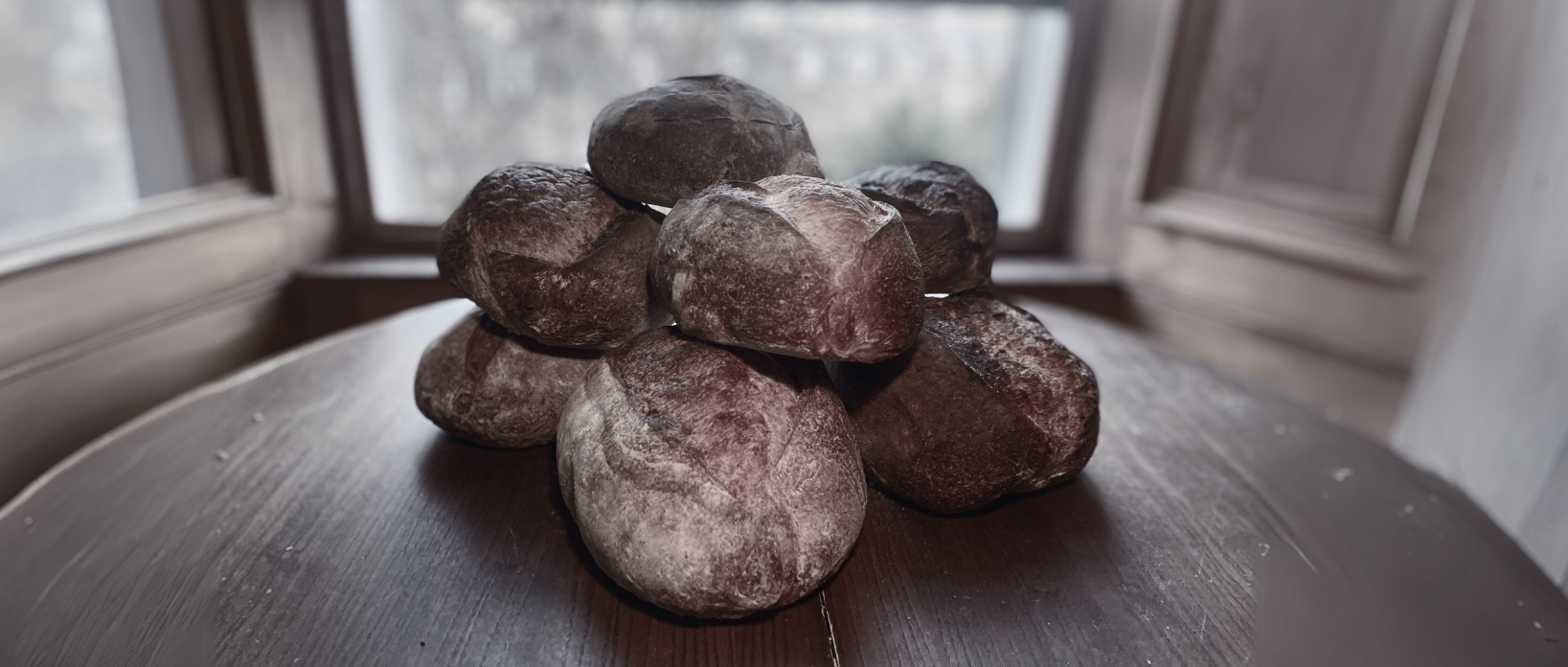
I use a hybrid: biga + starter. Big flavor, shorter proofs, flexible timing. Bake by feel—no scales. Did I invent it? Doubt it. It just makes great bread.
Don’t worry about the timeline—about five active minutes a day.
Why this method works:
- Long, slow fermentation (up to 36h) builds layered flavor
- Parallel ferments (biga + starter) create complementary profiles
- Flexible timing
You'll need:
Ingredients
- Unrefined sea salt
- Bread flour (1.5kg bag)
- Whole-grain flour
- Active sourdough starter
- Water
- Diastatic malt powder
- Brown sugar or natural sweetener (honey, malt syrup, maple...)
Equipment
- Large mixing container with lid
- Measuring cup for water
- Danish dough whisk
- Baking steel or stone
- Two shallow trays
- Sharp blade or lame
This recipe assumes a 1.5kg bag of strong white bread flour (common in Scotland). I usually buy 20kg in bulk and measure by cup, but the small bag keeps it simple.
Diastatic malt boosts yeast activity. Worth it.
Day One: Setting Up The Ferments
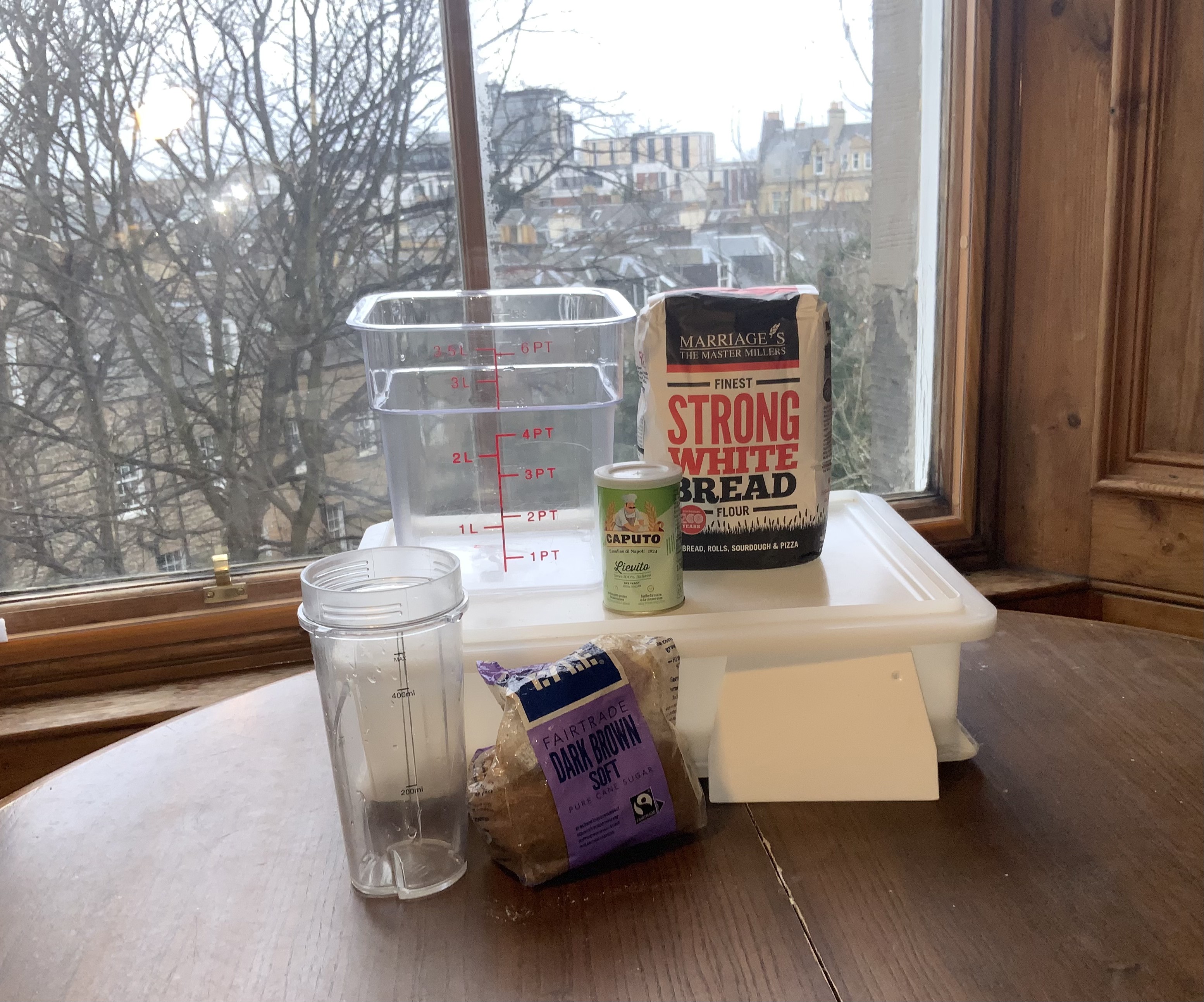
Everything starts with biga:
Your biga needs:
- 750g flour (half your bag)
- 450g water (60% hydration)
- ¼ teaspoon dry yeast
- ¼ teaspoon brown sugar or a splash of natural syrup
First, dissolve the sugar and yeast in water.
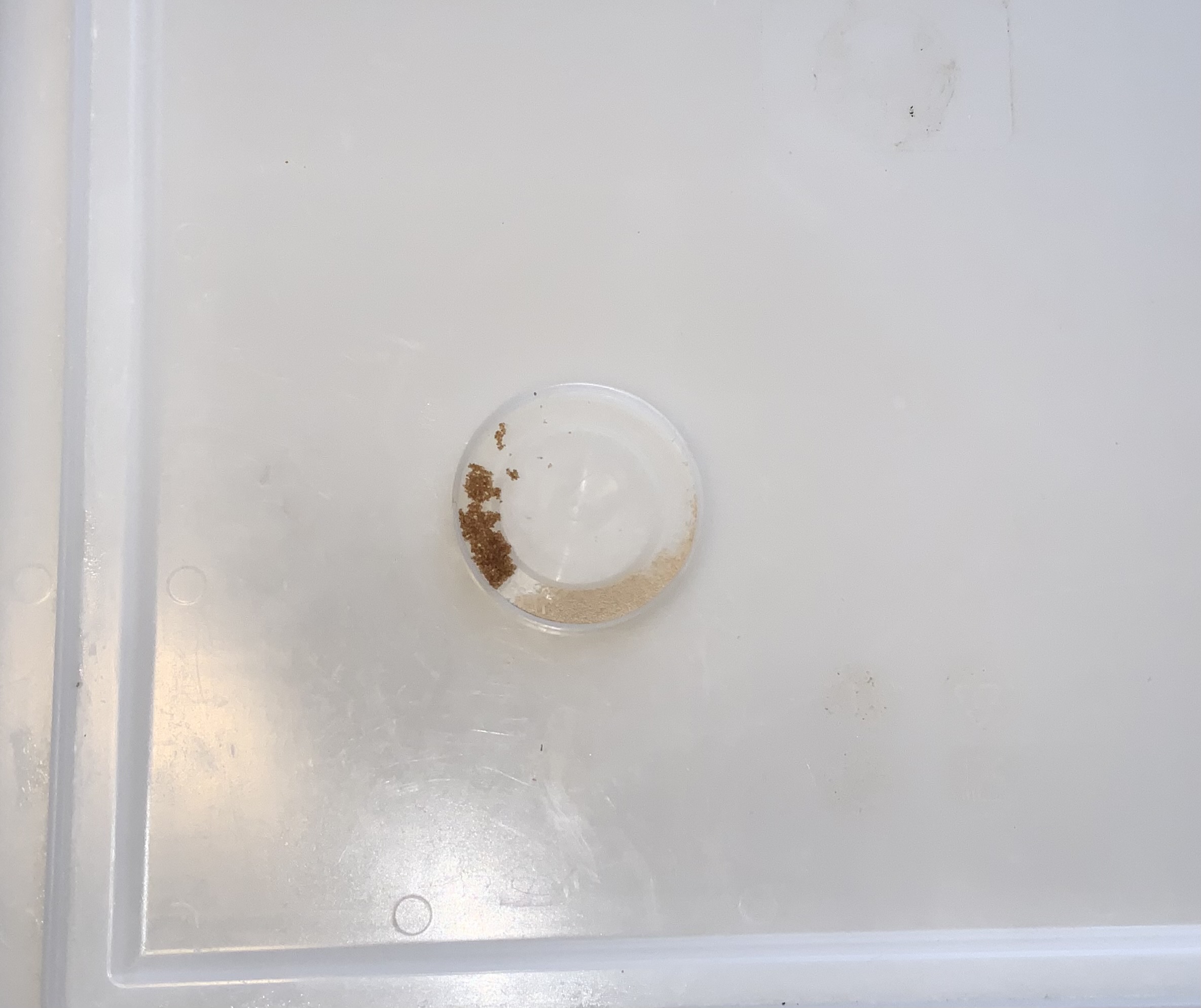
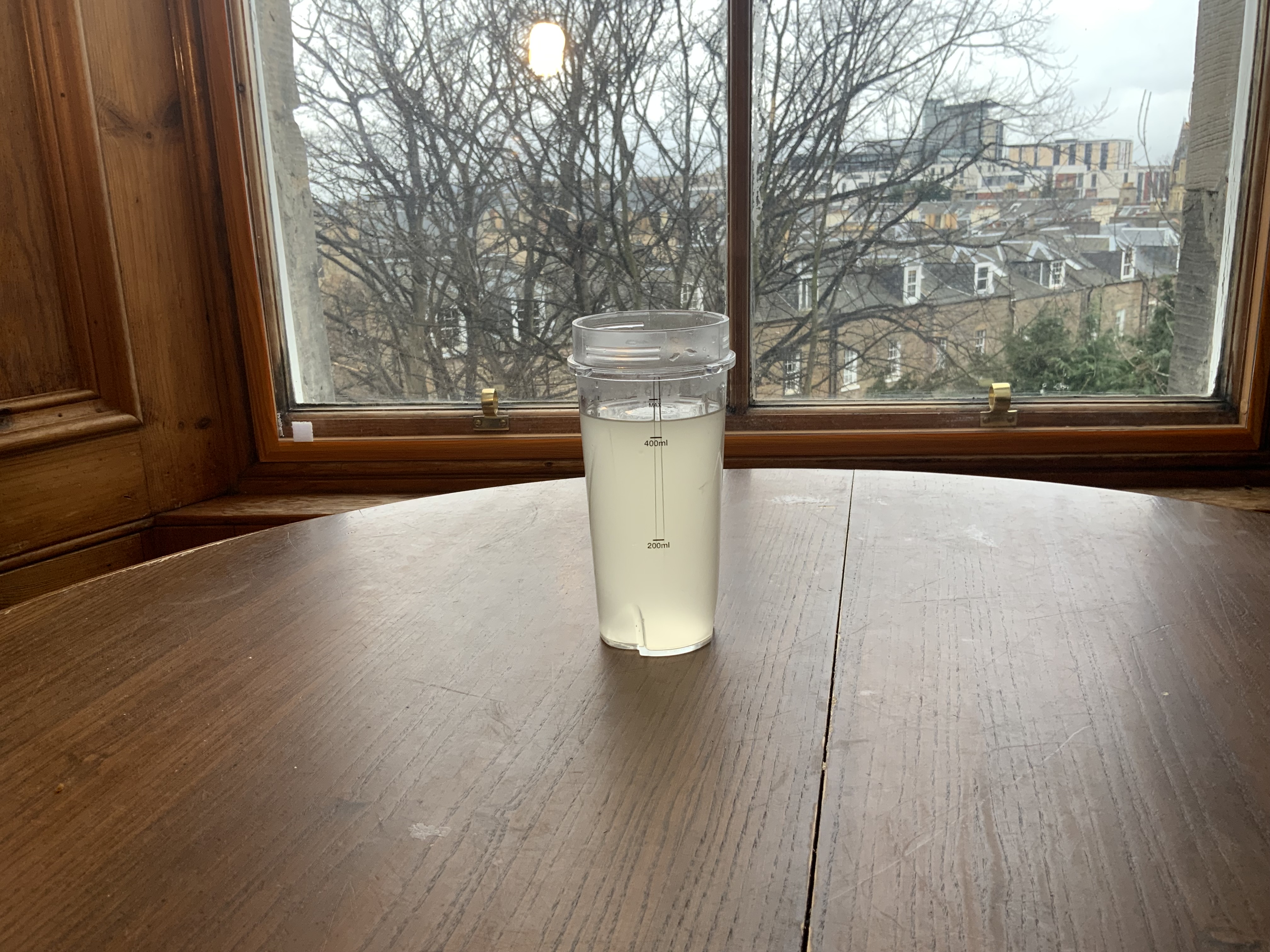
Add half your flour to a container and pour in the liquid. Use a lidded container and shake for 30 seconds, or mix in a bowl (messier).
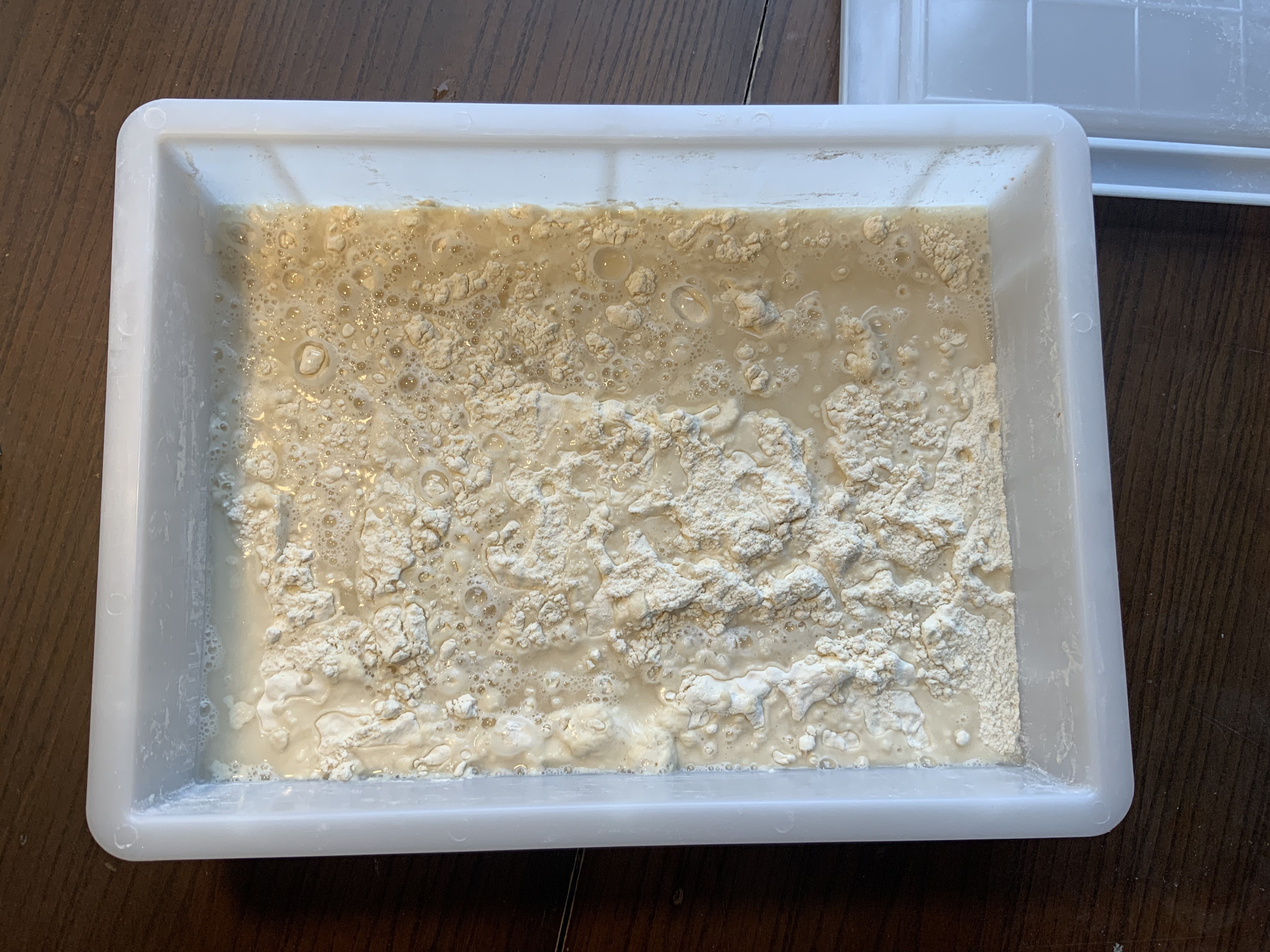
Break clumps with your fingers or a scraper:
Shaggy is good: micro-environments encourage varied fermentation and flavor; full gluten comes later.
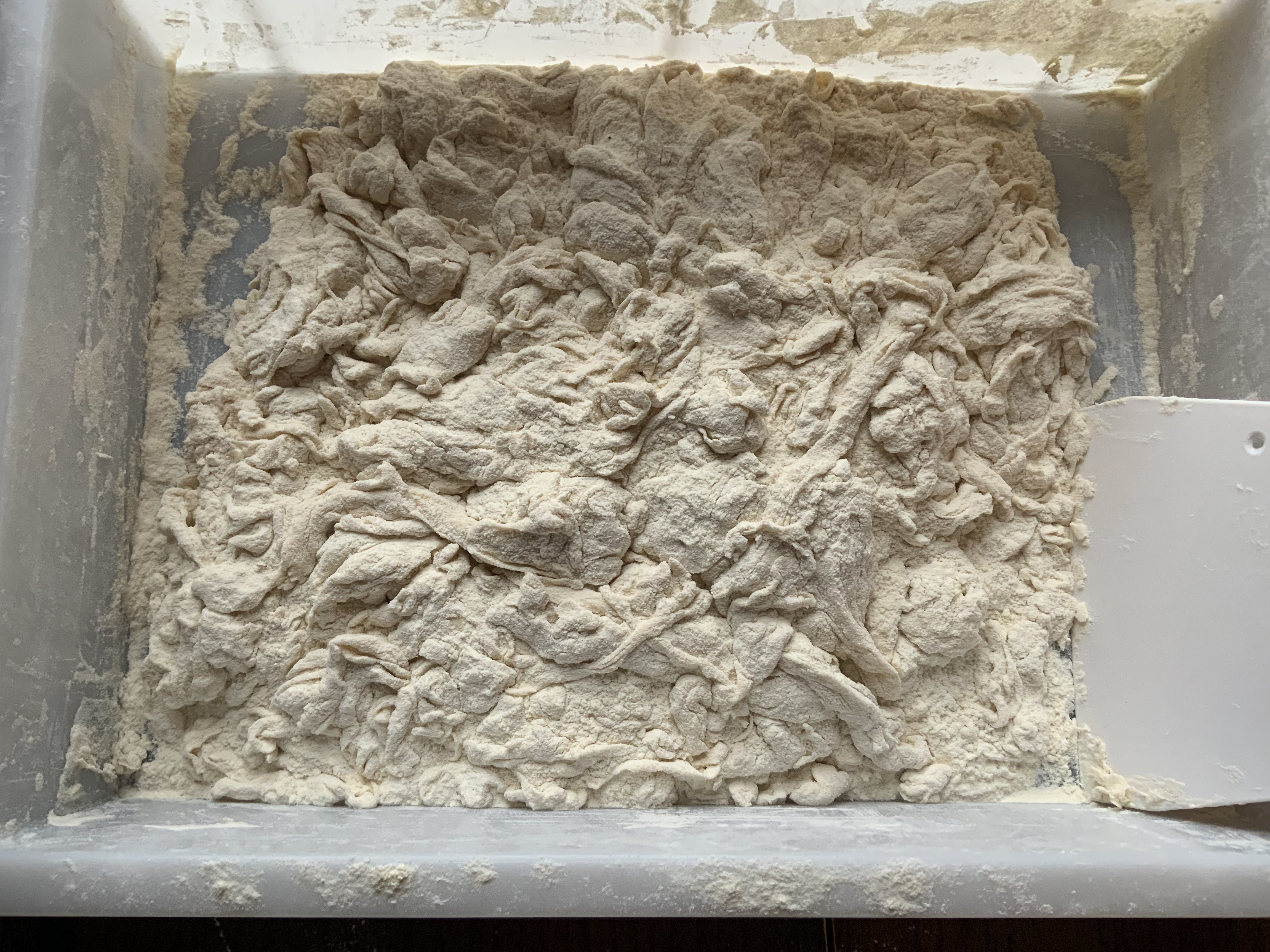
Cover, poke a few holes, and let it go. Activity starts in 2–3 hours.
Sourdough Starter: The Scraping Method
Skip daily feeds and waste. Keep a small starter in the fridge; feed it the night before you bake.
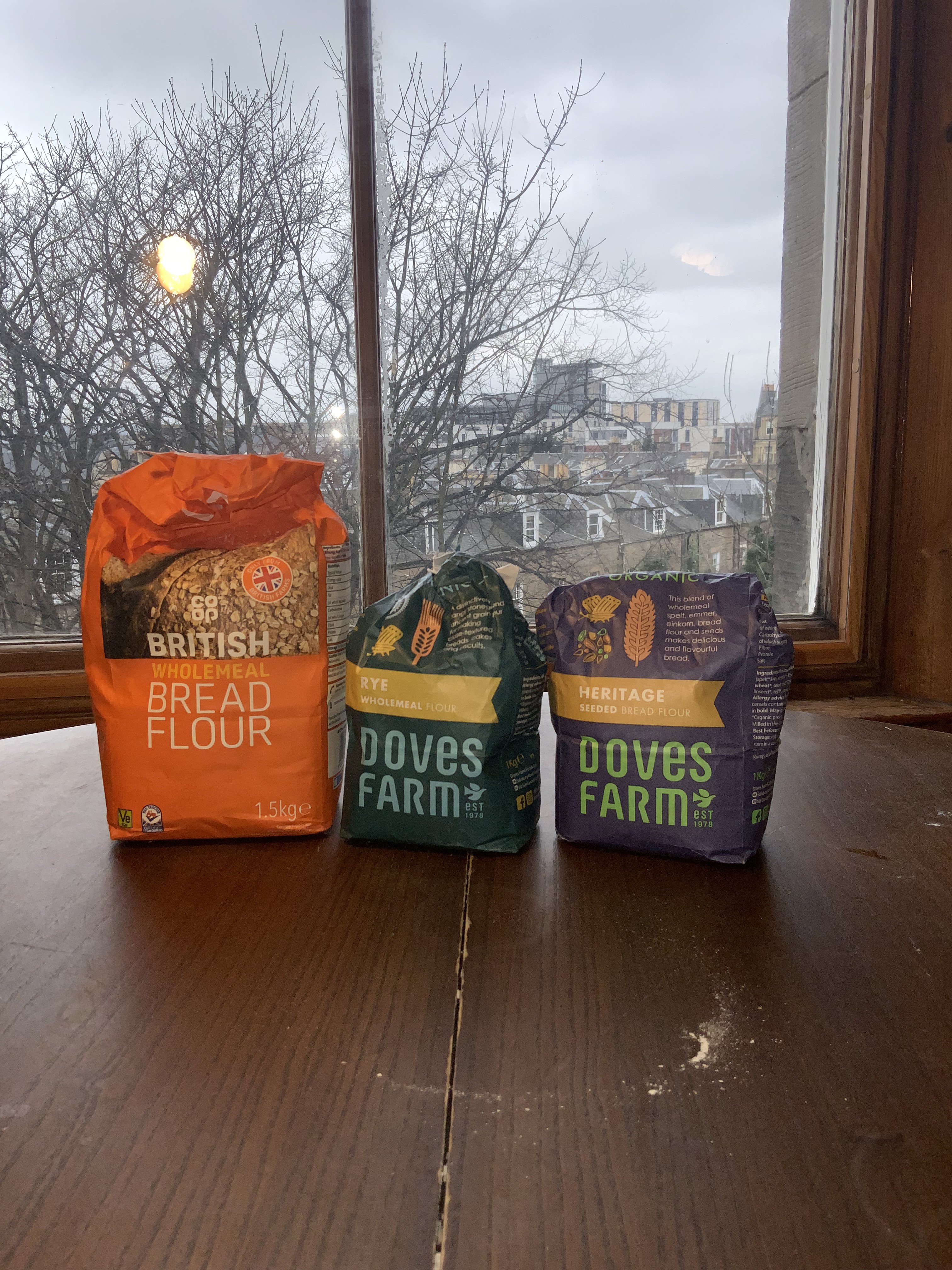
Feed 8 tablespoons whole-grain flour with ~2/3 volume water. Whole grains bring wild yeasts and enzymes.
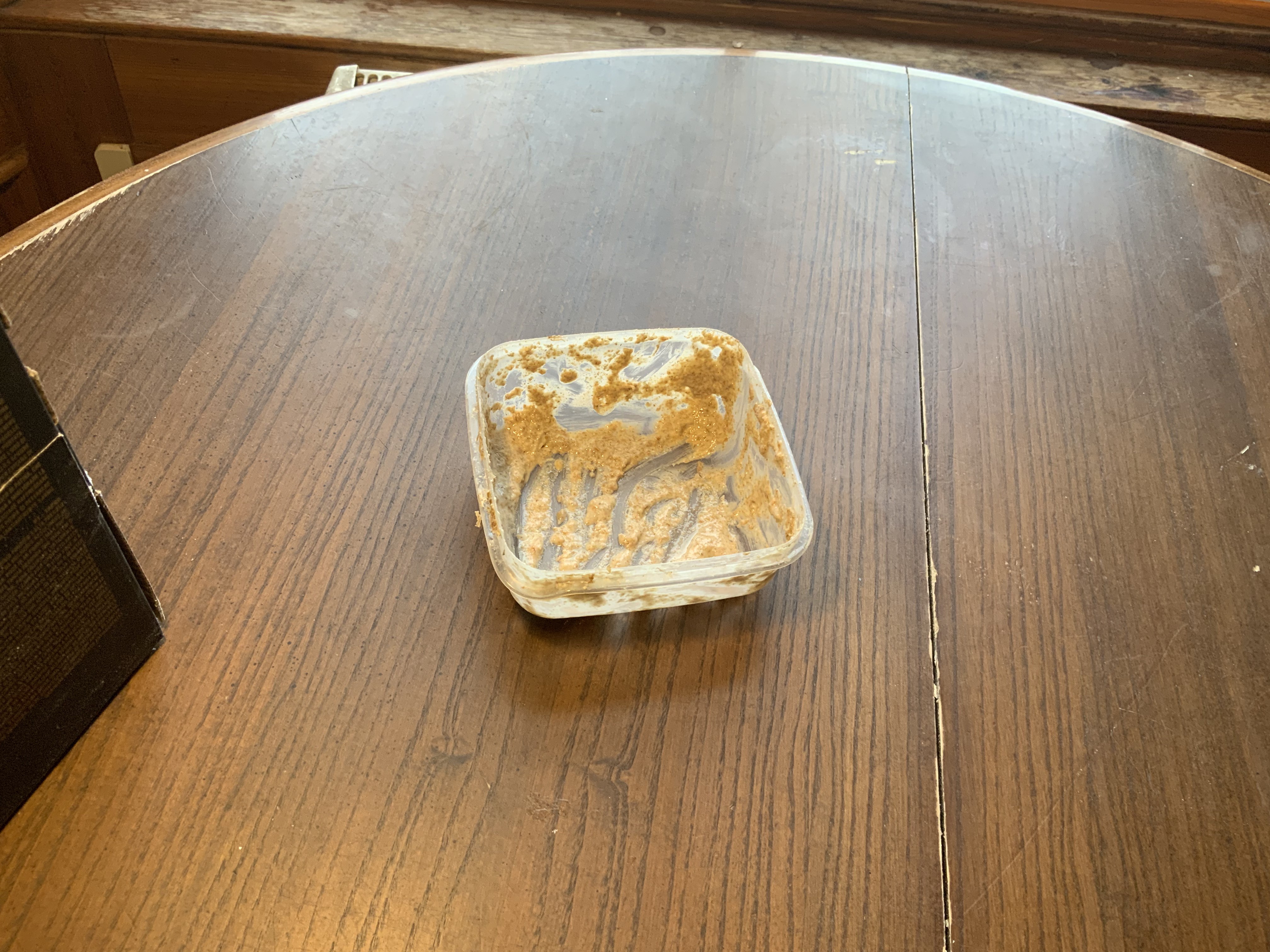
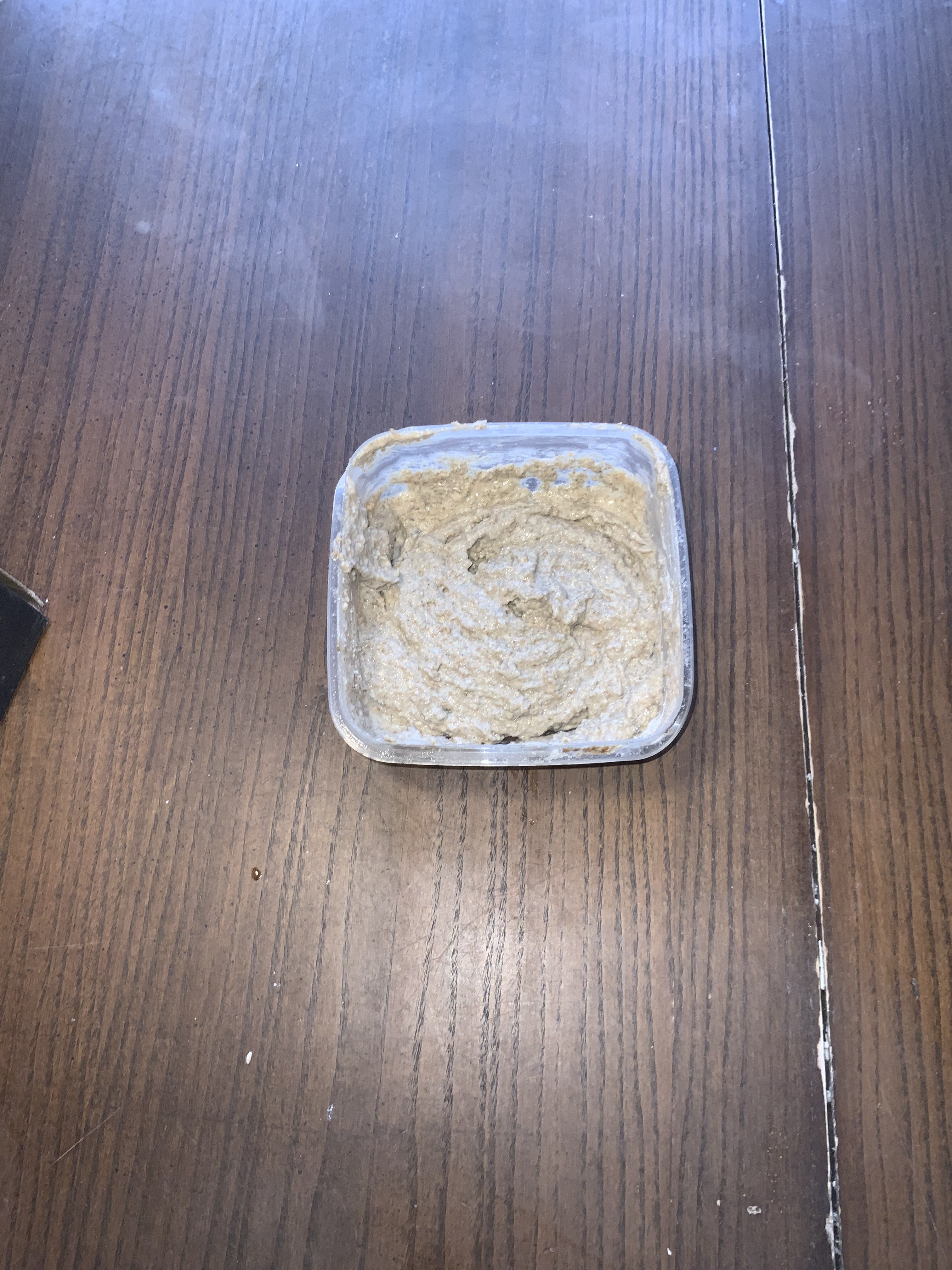
Let both ferments work overnight.
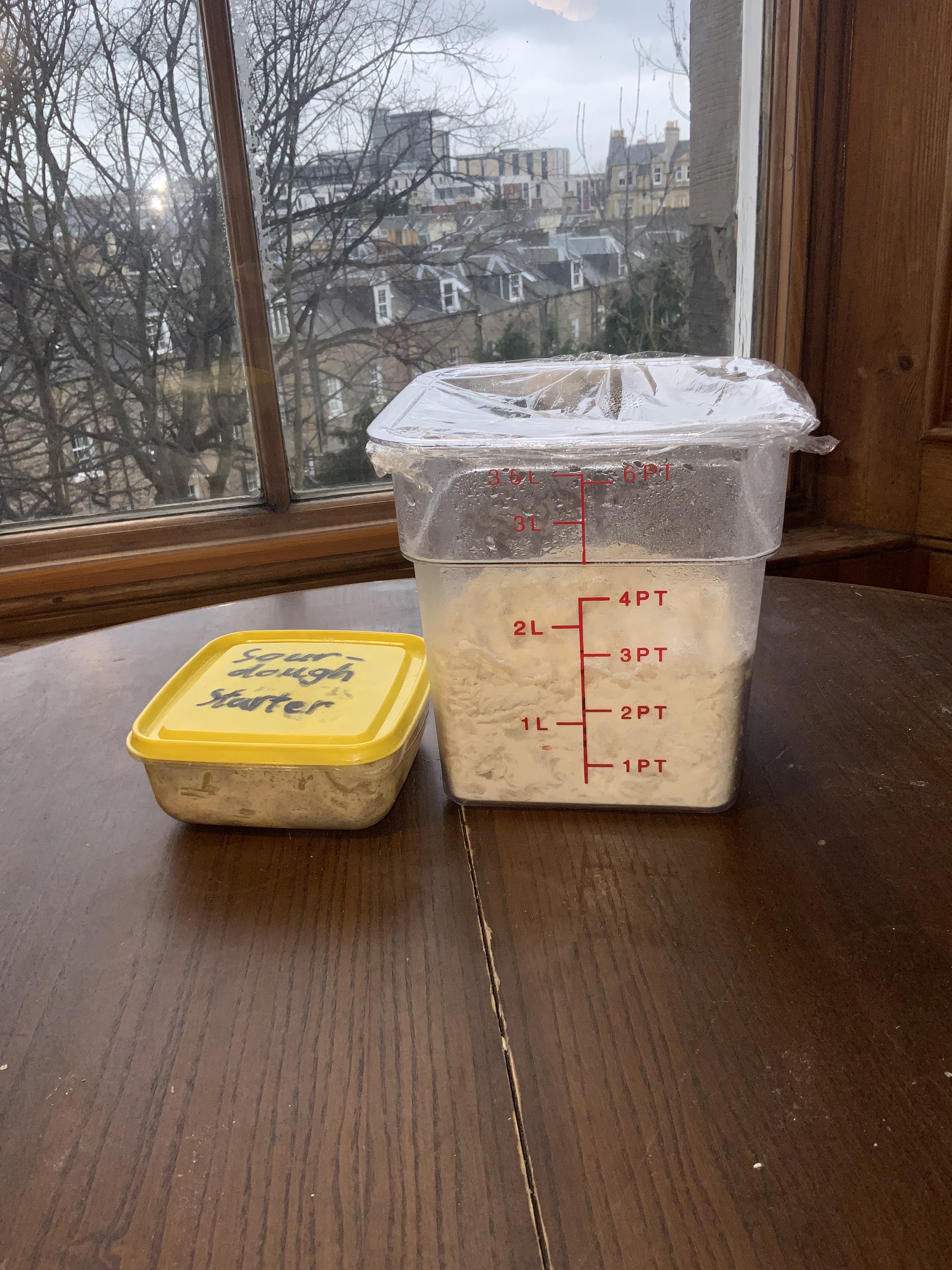
Day Two: Building Structure
For today, you'll need:
- Your fermented biga
- Active starter
- Rice flour (for dusting bannetons)
- Remaining bread flour (750g)
- Water (450–500ml, adjust by feel)
- Sea salt (2 tablespoons)
- Diastatic malt powder (½ tablespoon)
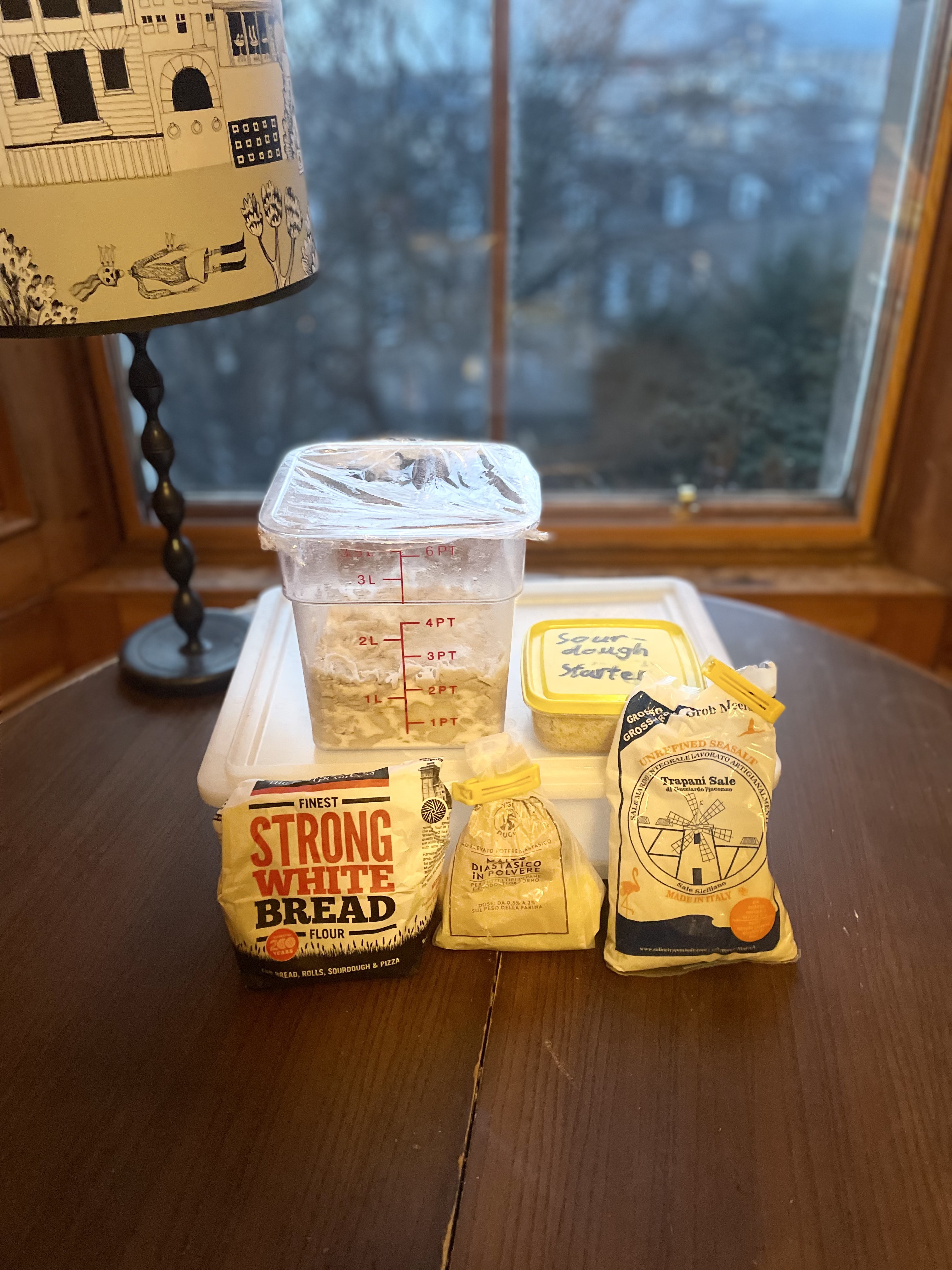
Use sea salt, not table salt; minerals help gluten and fermentation.
Morning Mix
Morning brings two aromas: biga’s malty sweetness and starter’s acidity.
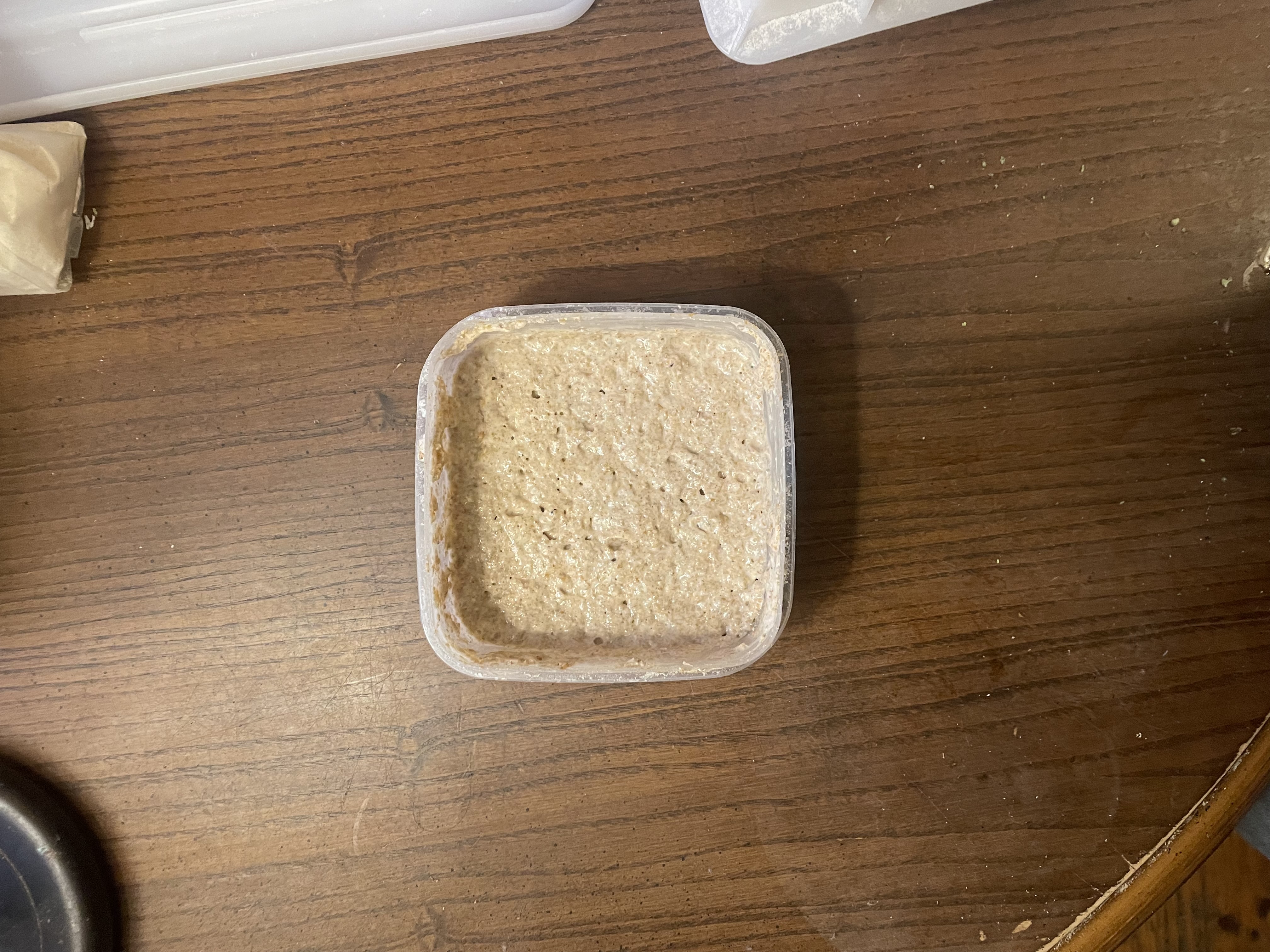
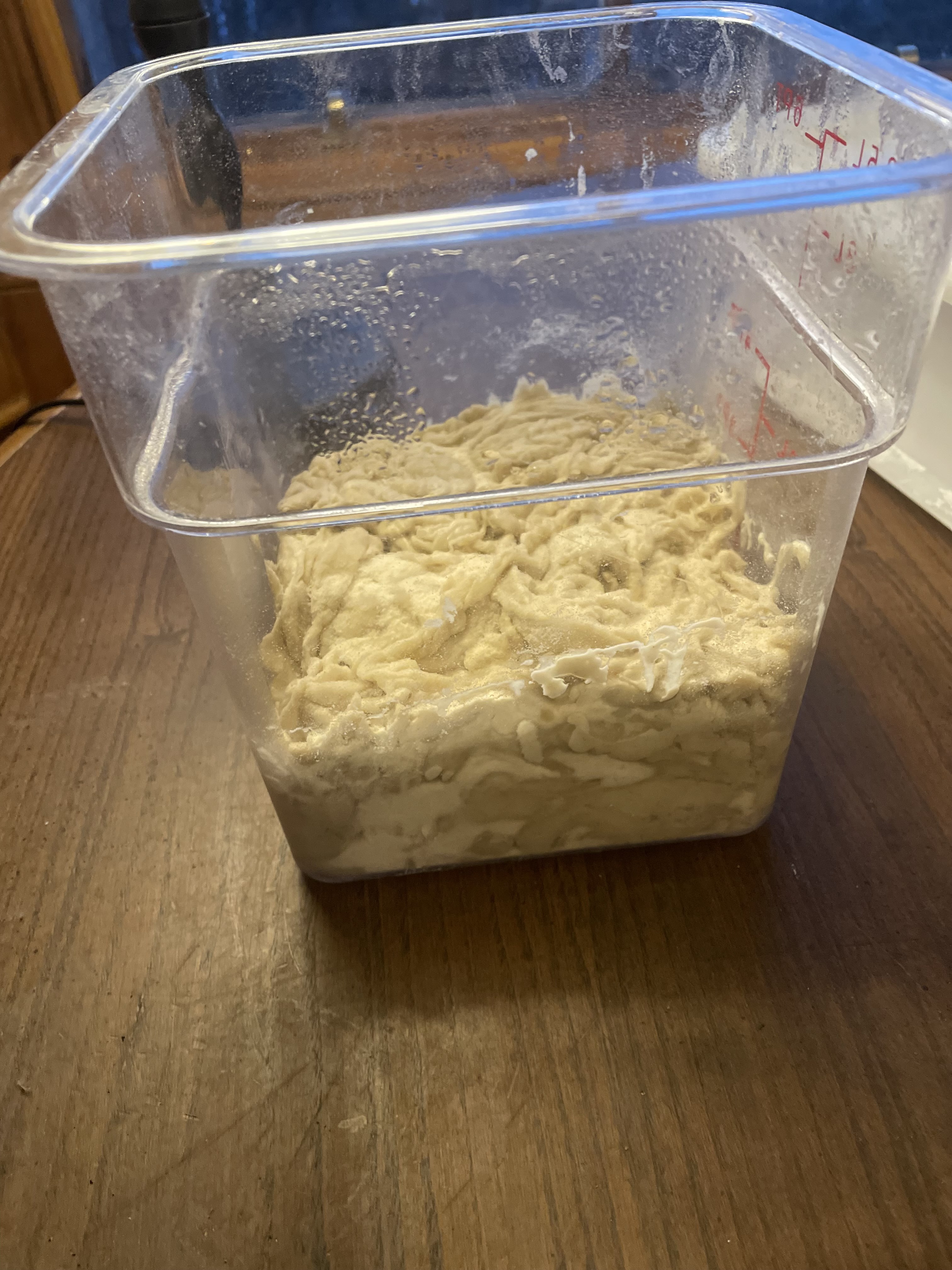
With a dough whisk, combine water, starter, salt, and diastatic malt.
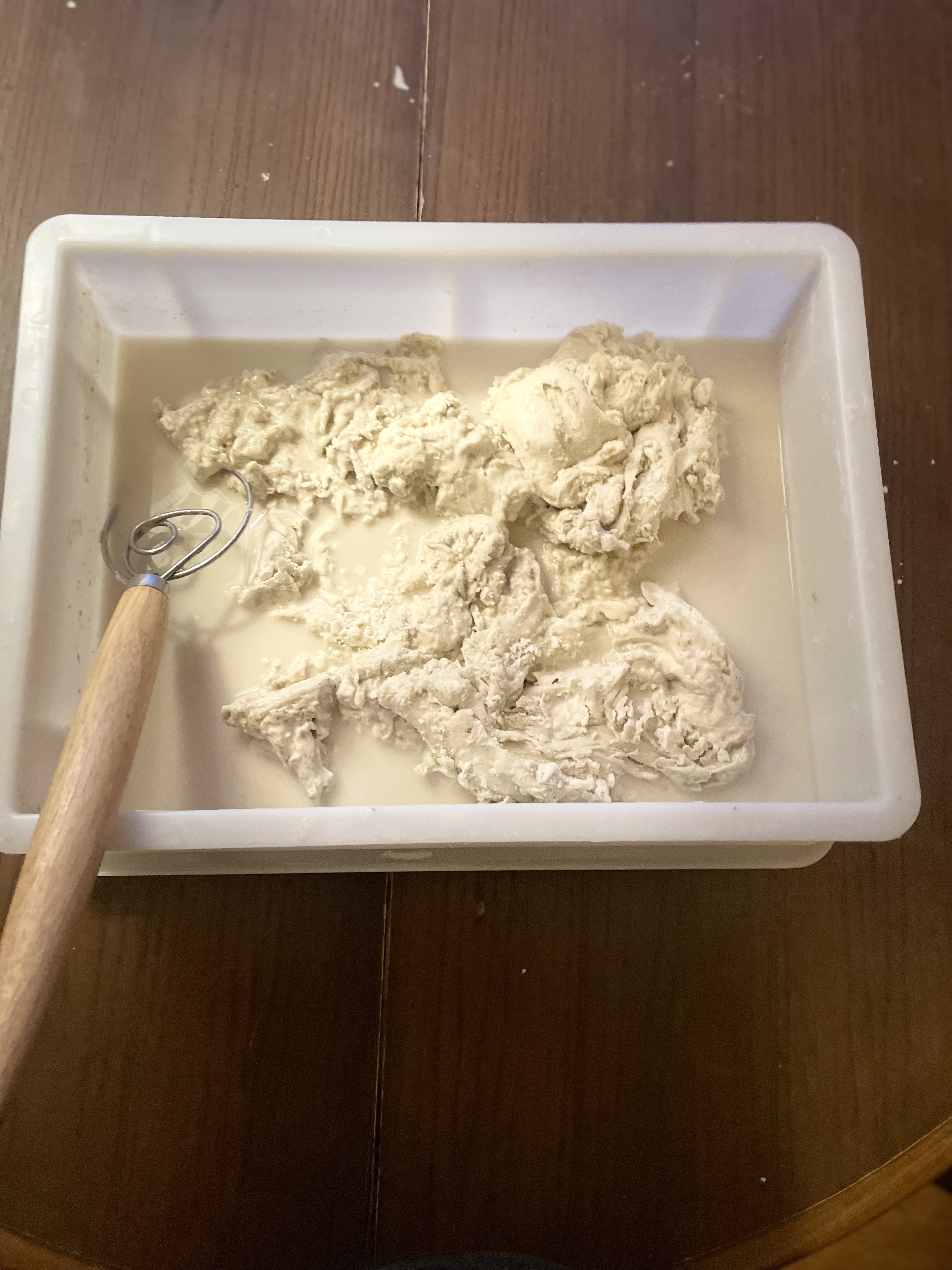
Tear biga into chunks and whisk to break larger pieces. Use body weight to press down and hydrate. Unmixed clumps lead to dry pockets later.
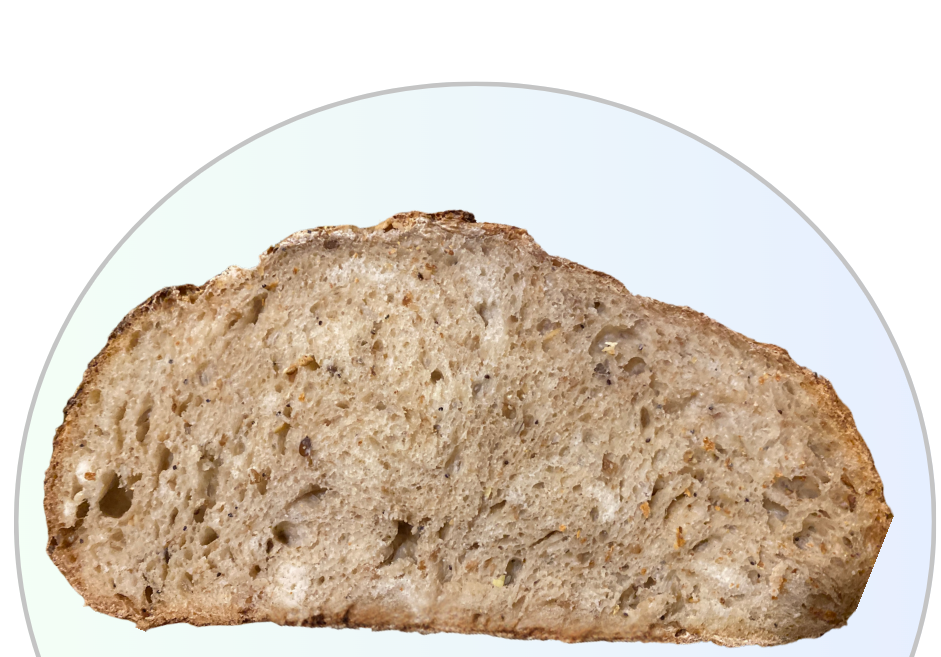
Add the remaining flour and mix. Shaggy is perfect. Rest now—hydration and enzymes build extensibility without kneading.
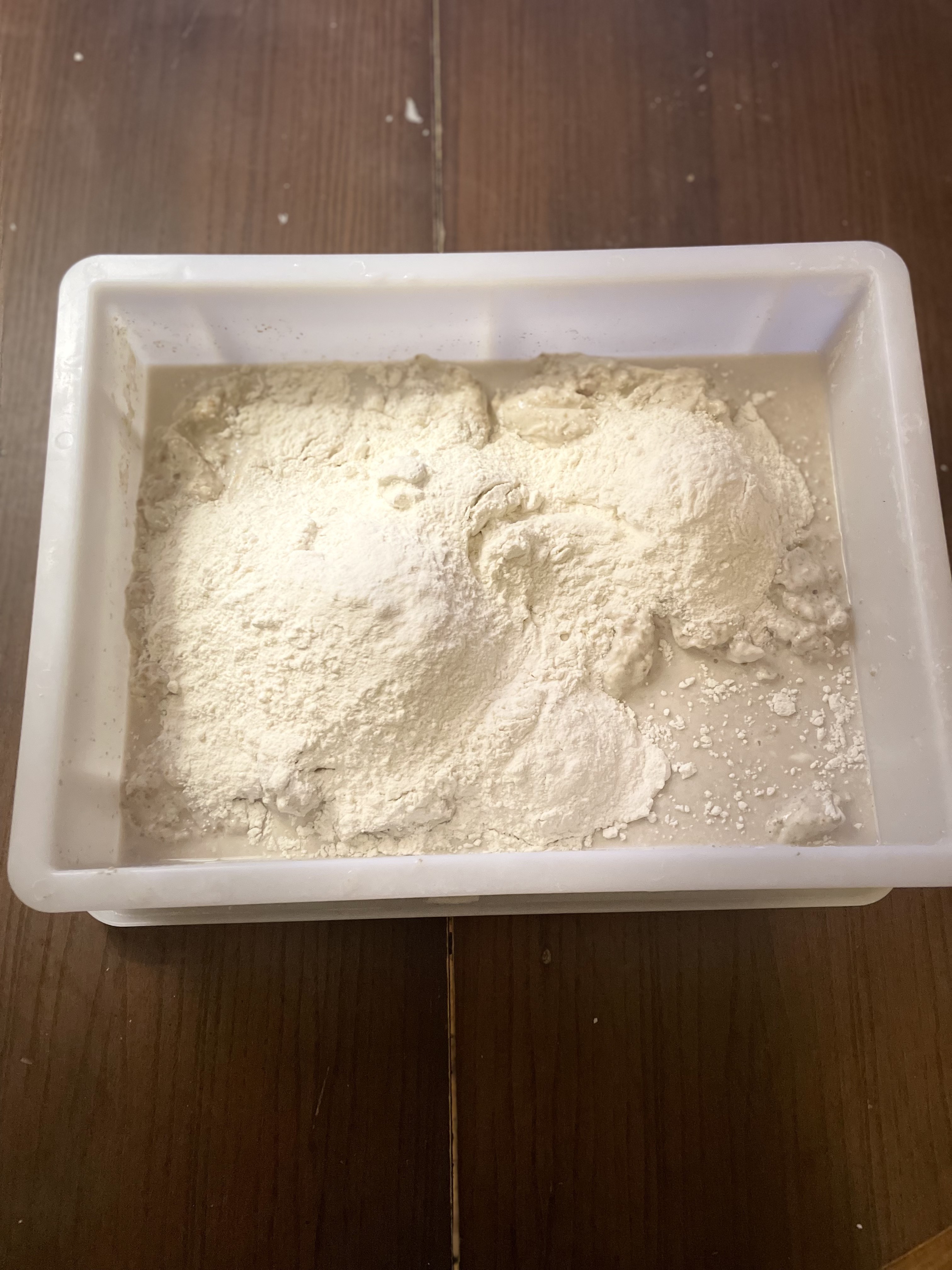
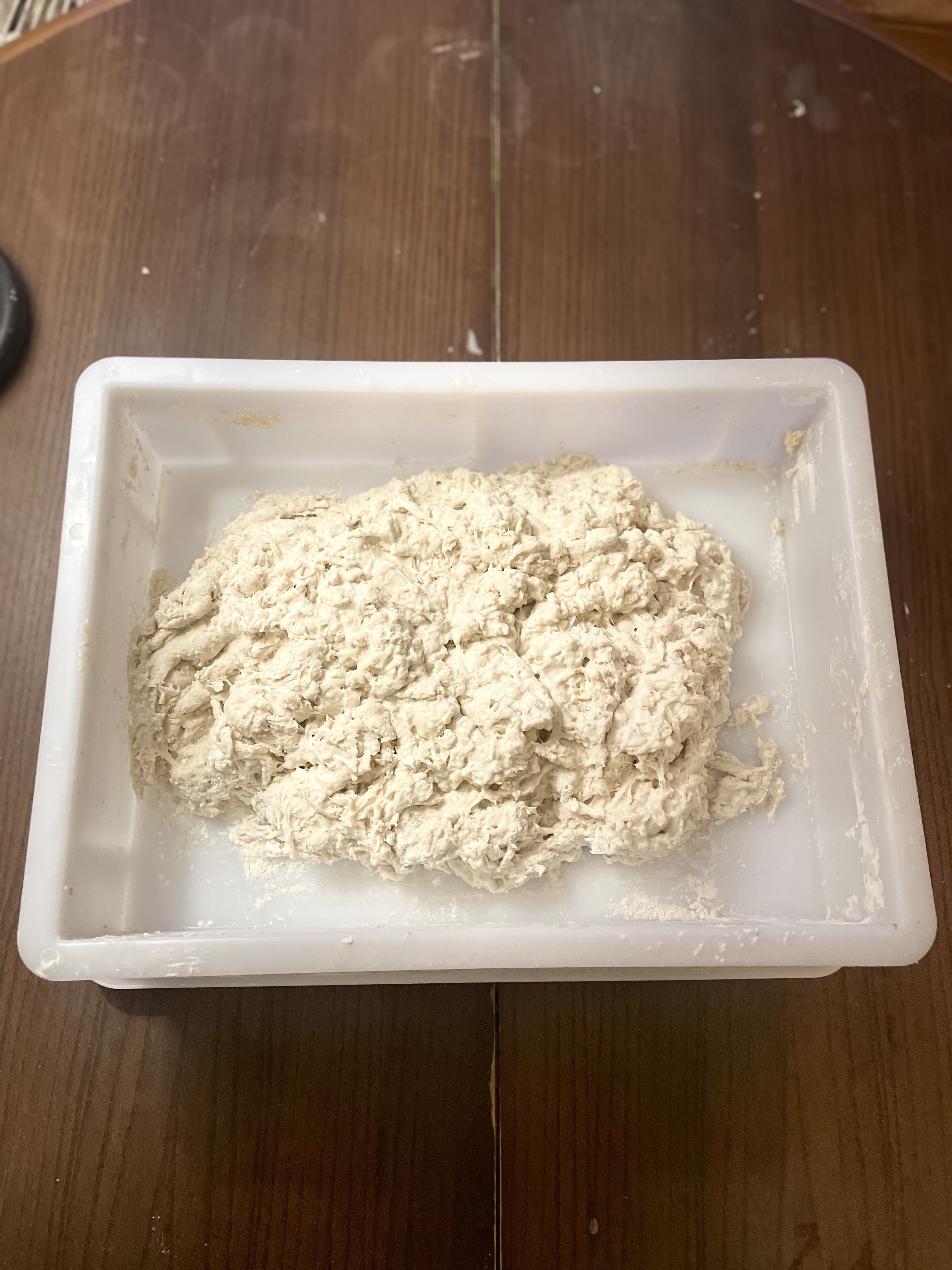
Building Strength Through Folding
Light kneading—consistency beats technique.
Start with stretch-and-folds: lift an edge until just before tearing, fold to center, rotate 90°, repeat.
After 30 minutes, switch to coil folds: slide wet hands under the center, lift, tuck edges underneath.
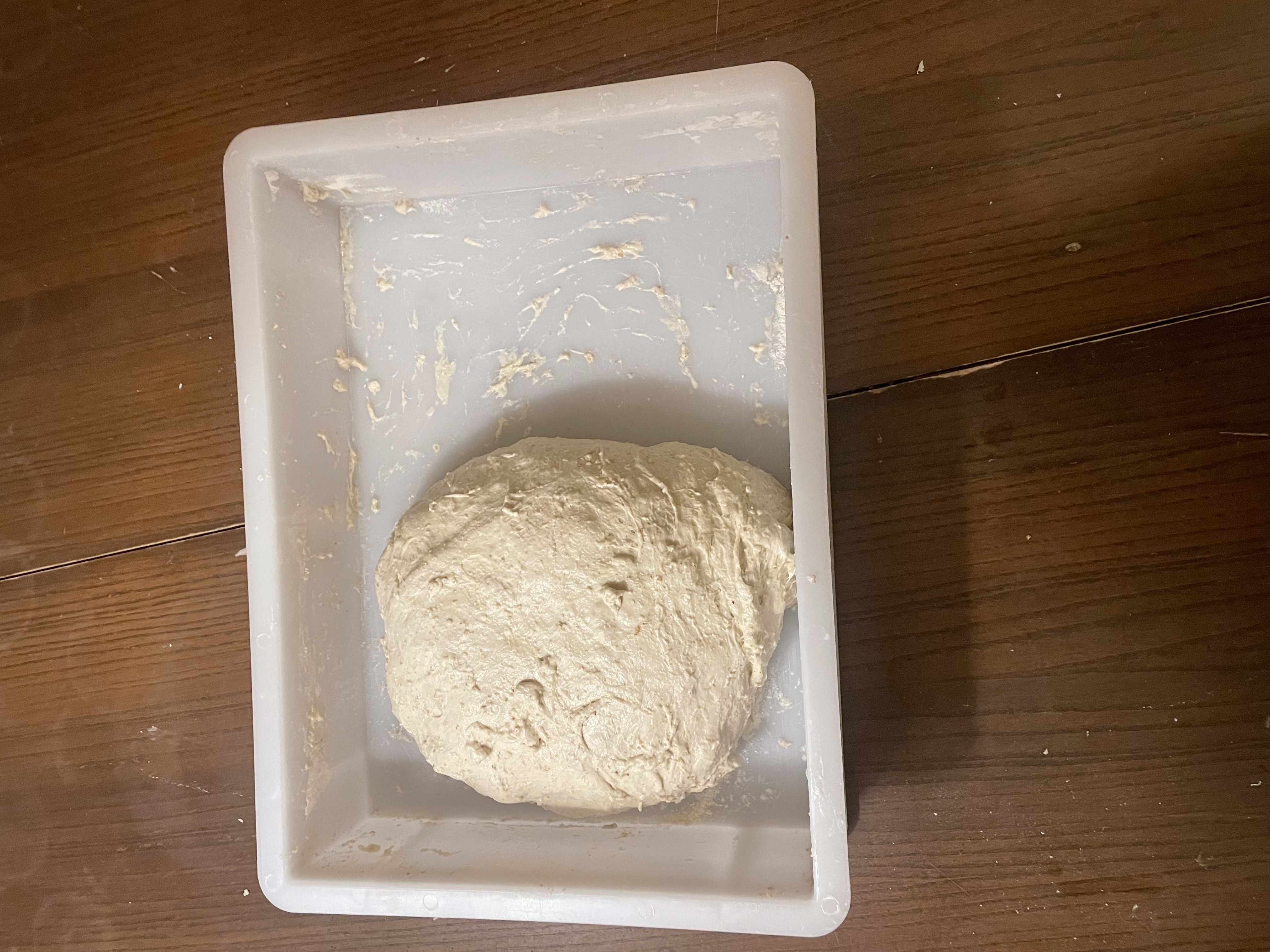
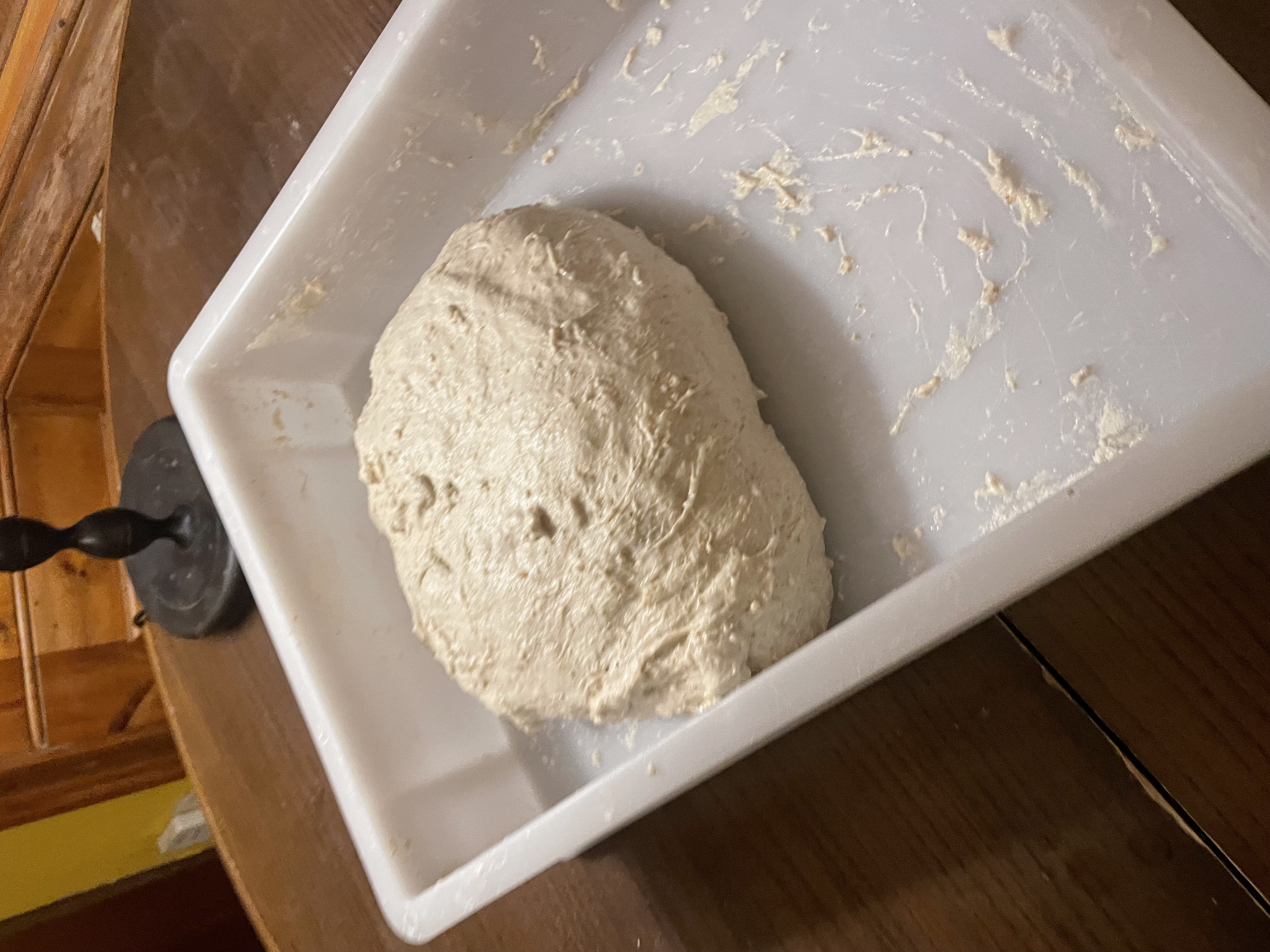
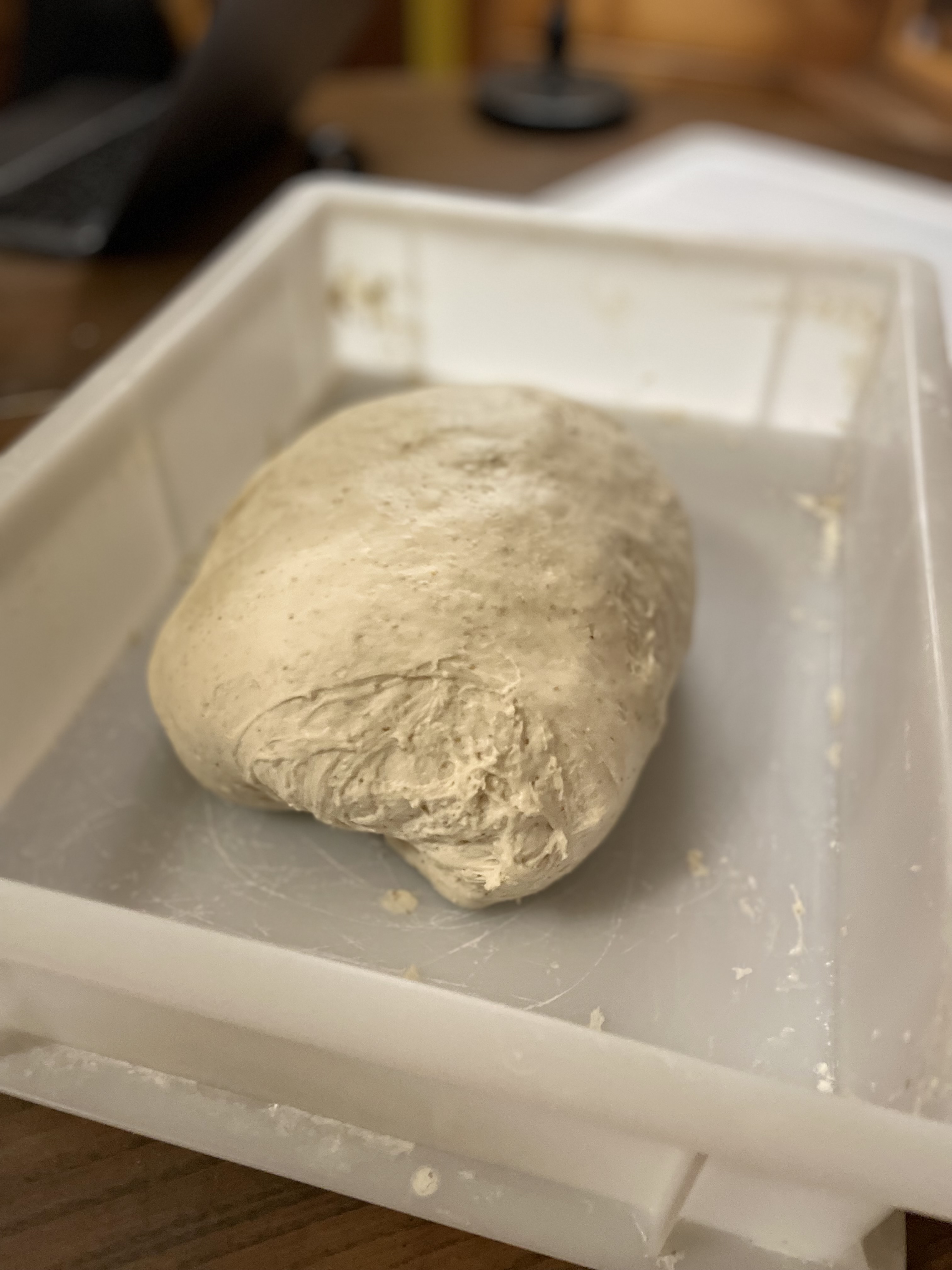
Your dough now feels cohesive and elastic—adult Play-Doh, eh.
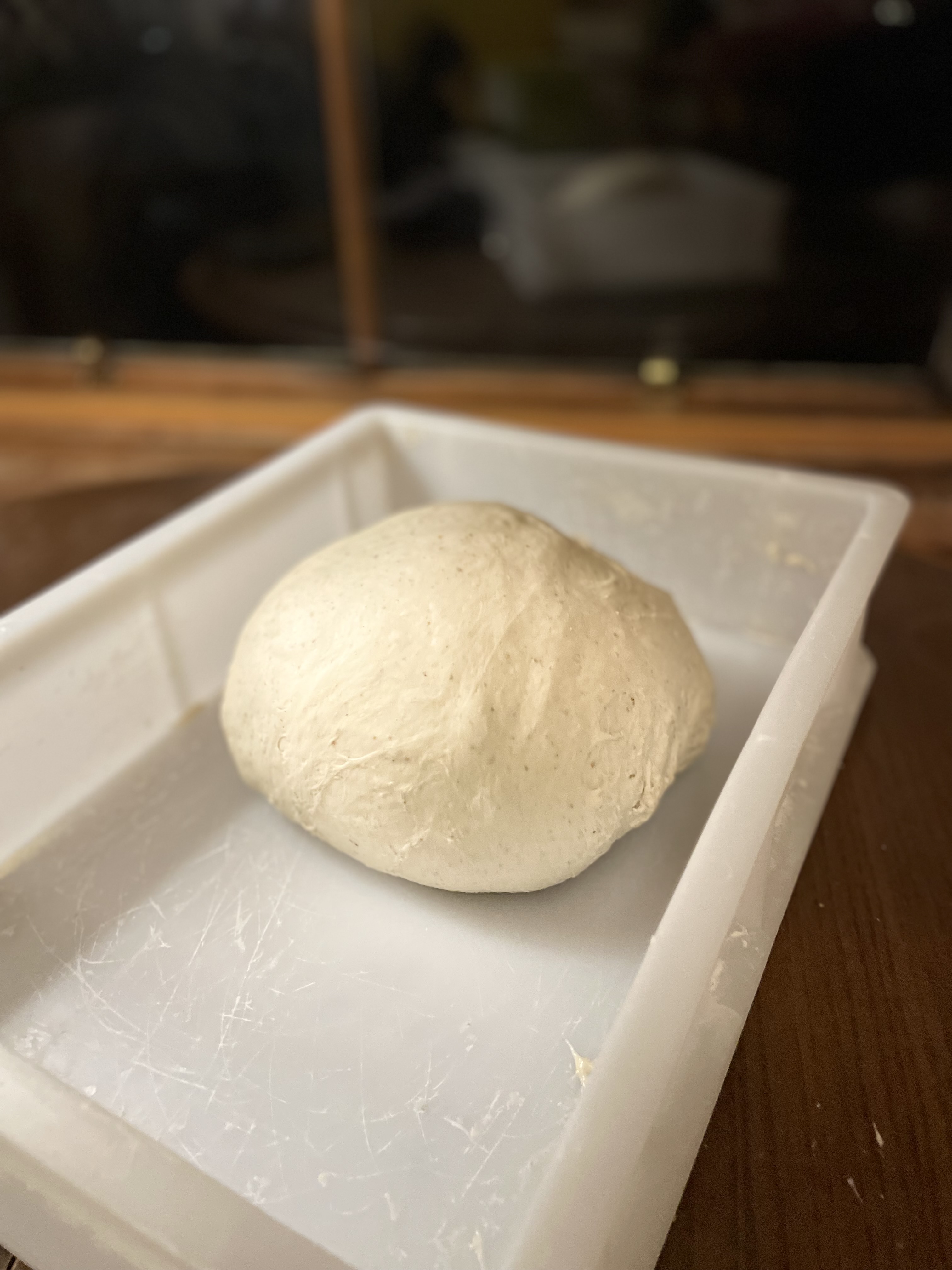
Divide into two, pre-shape into rounds, and rest 30 minutes.
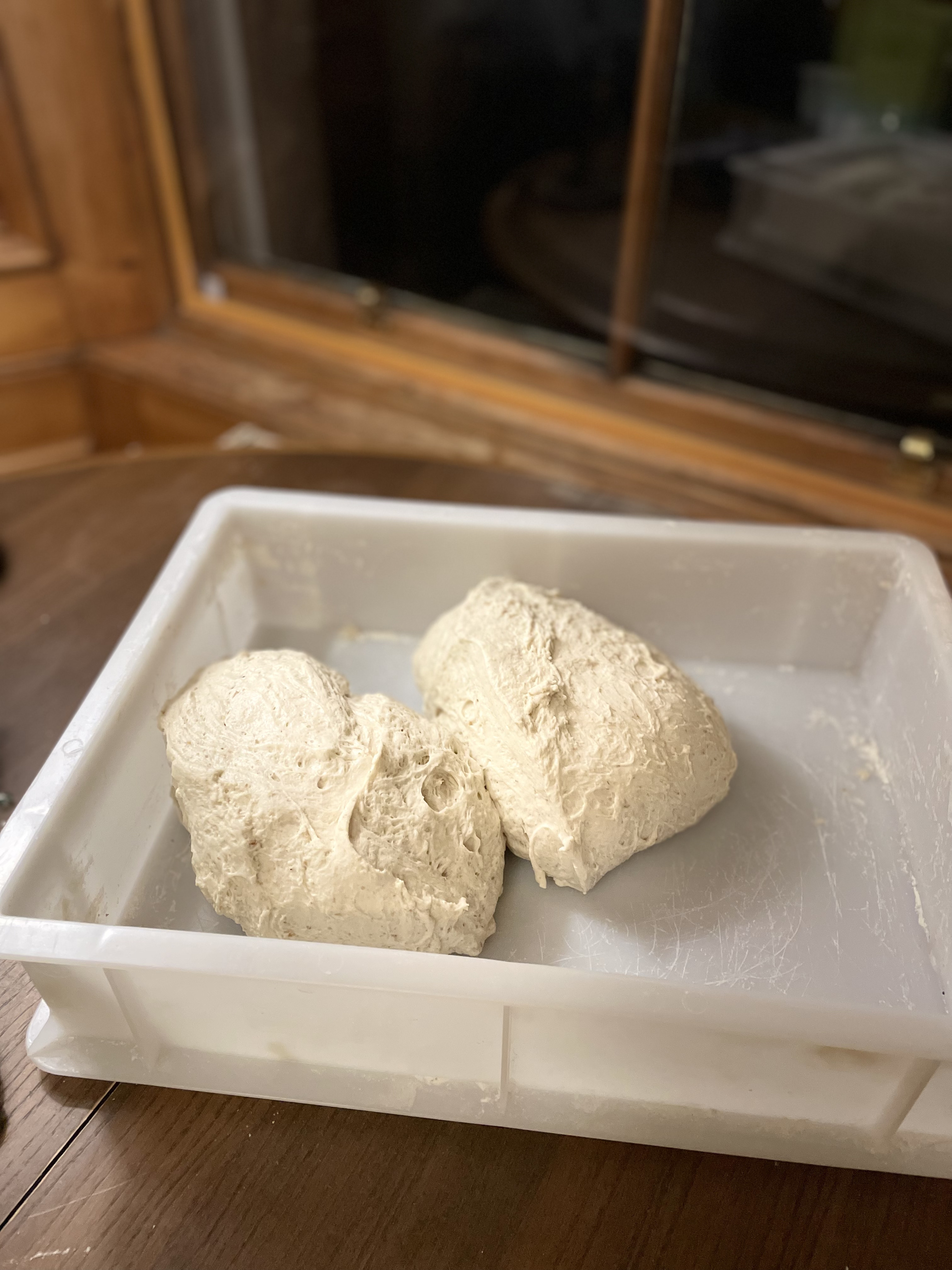
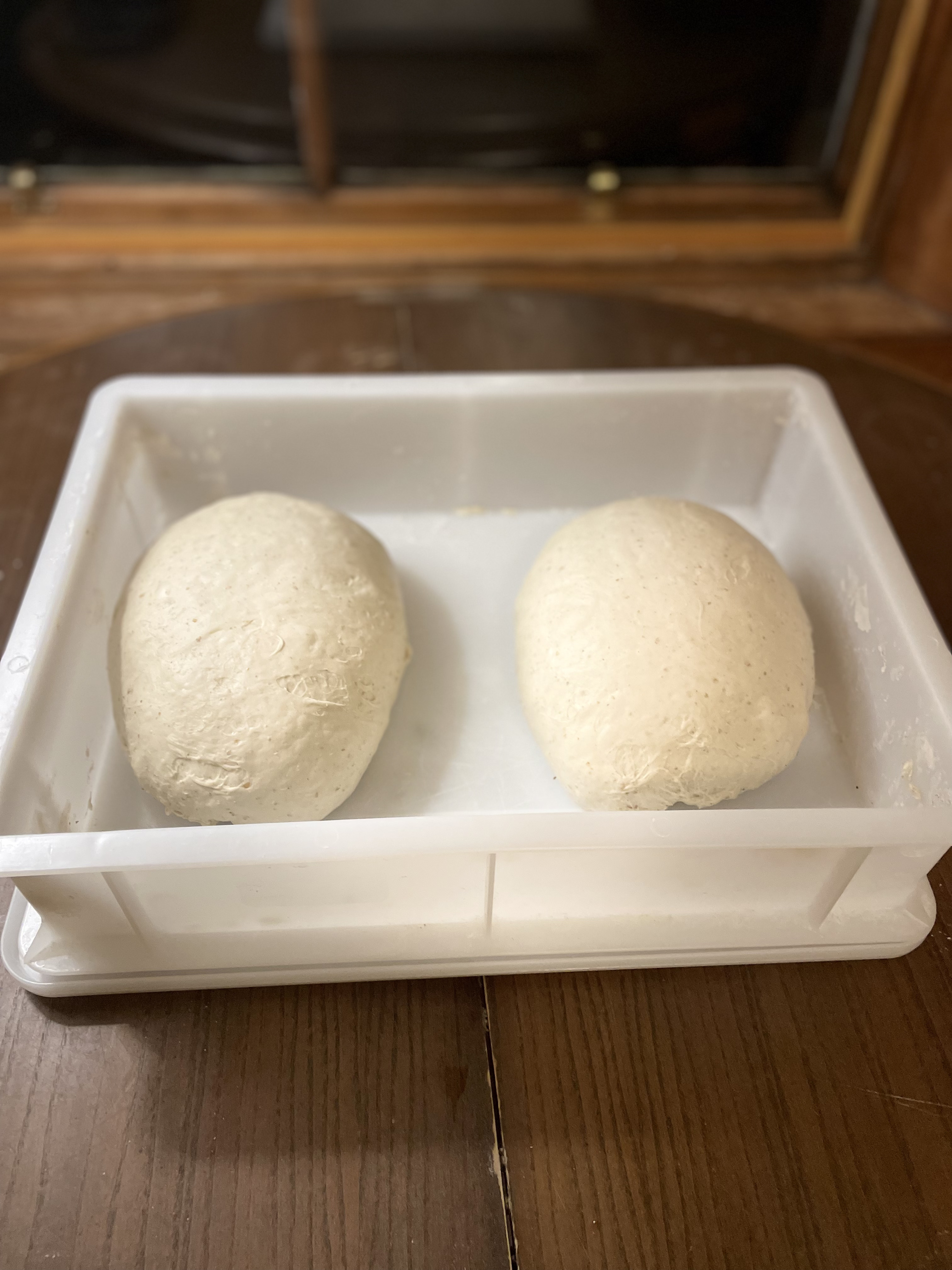
Final Shaping: Building Surface Tension
Dust bannetons with rice flour so gluten doesn’t stick.
Create tension without degassing:
- Flip a round onto a lightly floured surface
- Fold the far edge two-thirds toward you
- Fold the near edge over that
- Rotate 90° and repeat
- Flip seam-side down
- Drag gently toward you to tighten
- Rotate a quarter turn and repeat
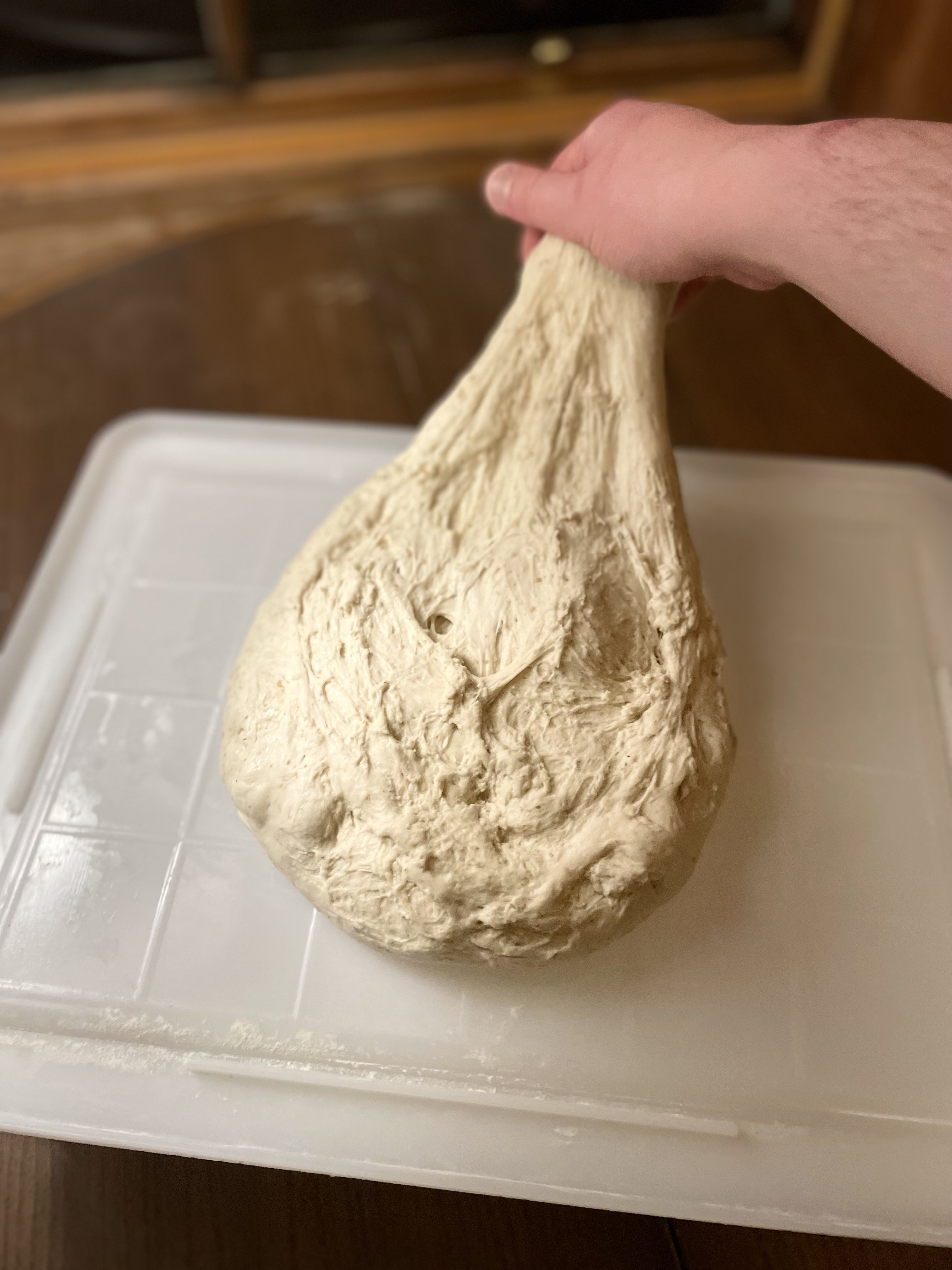
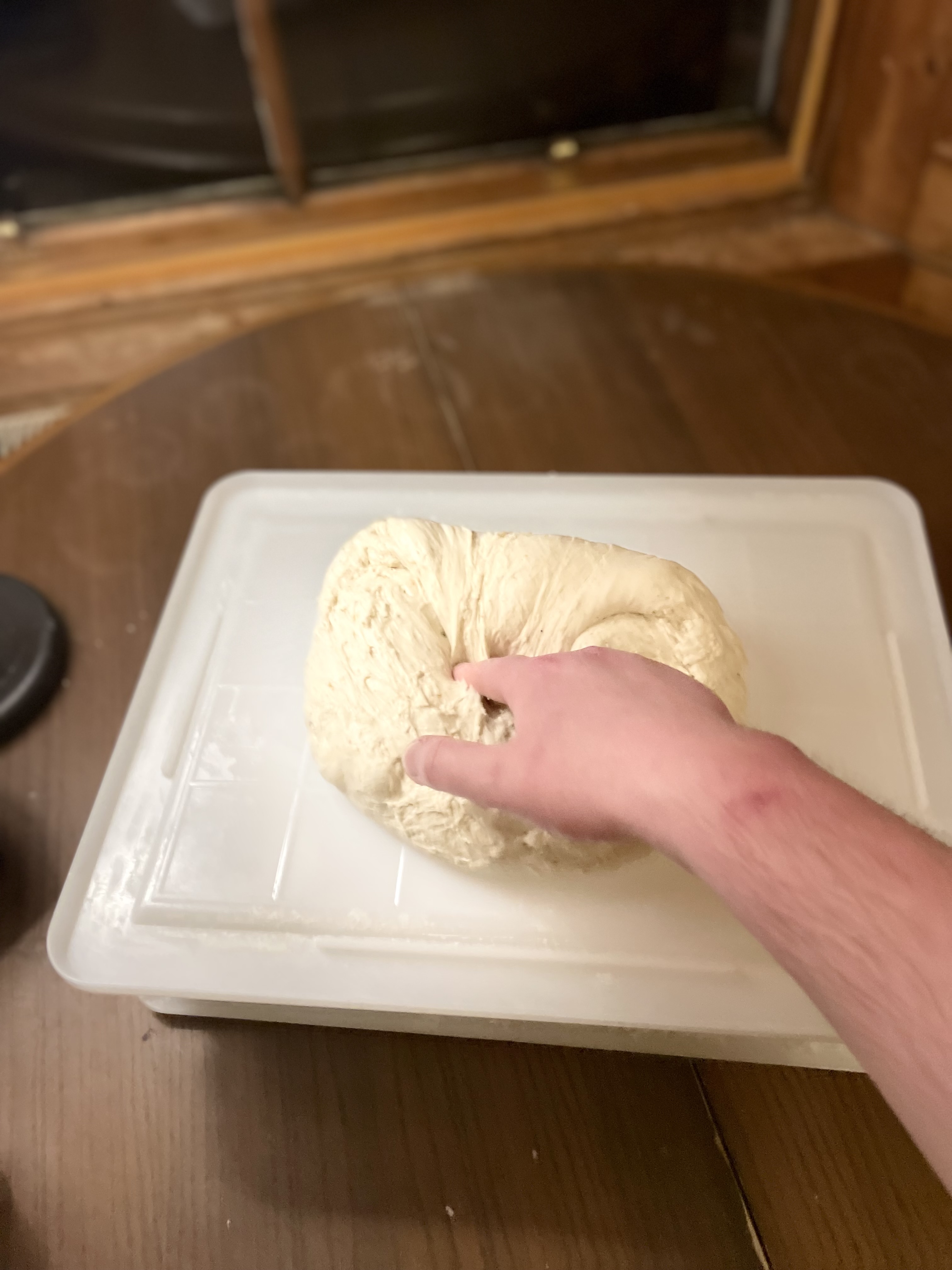
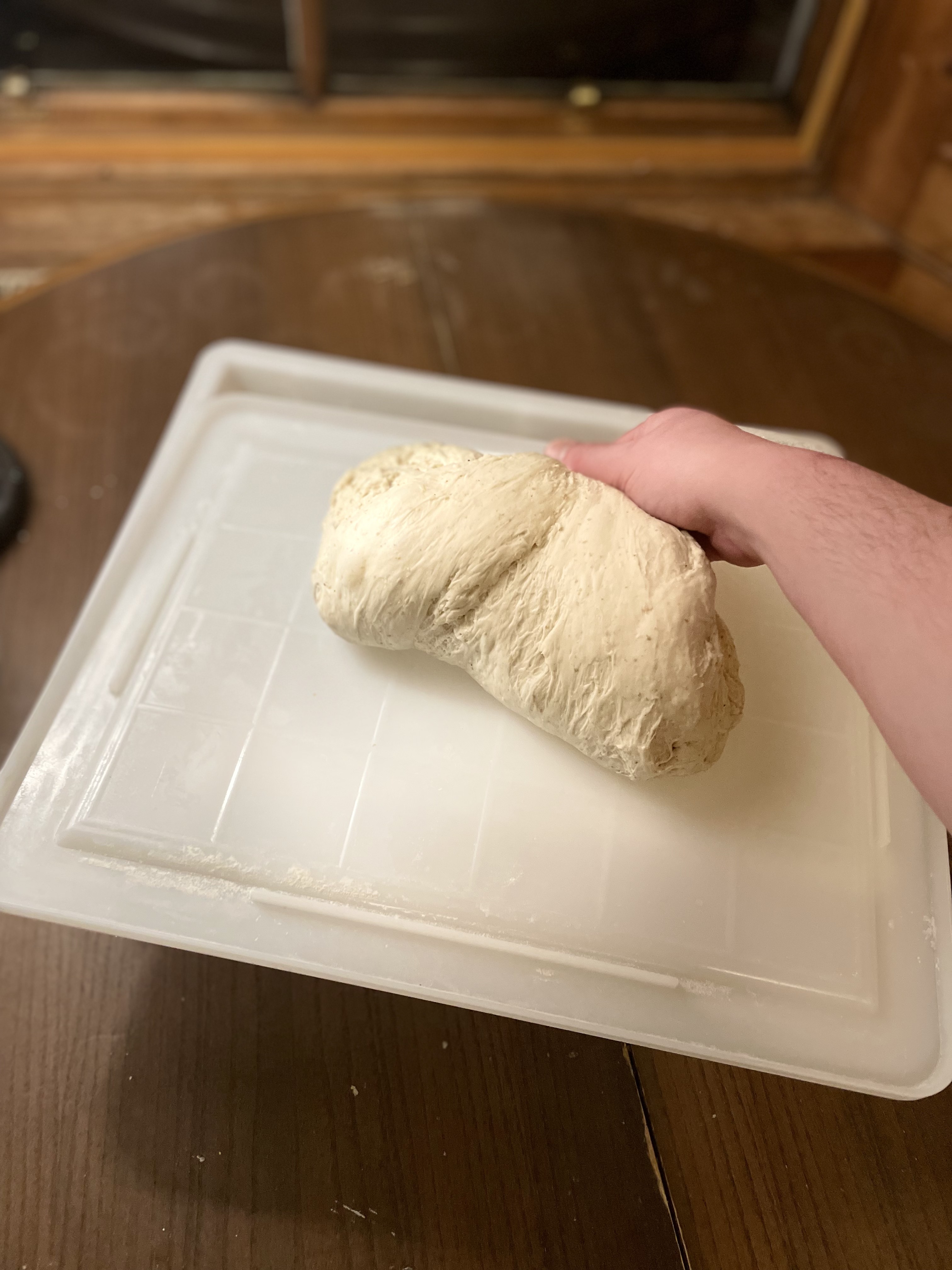
Transfer each loaf, seam-side up, and dust with rice flour. The seam gives a natural weak point for expansion. Cold-proof in the fridge 12–30 hours.
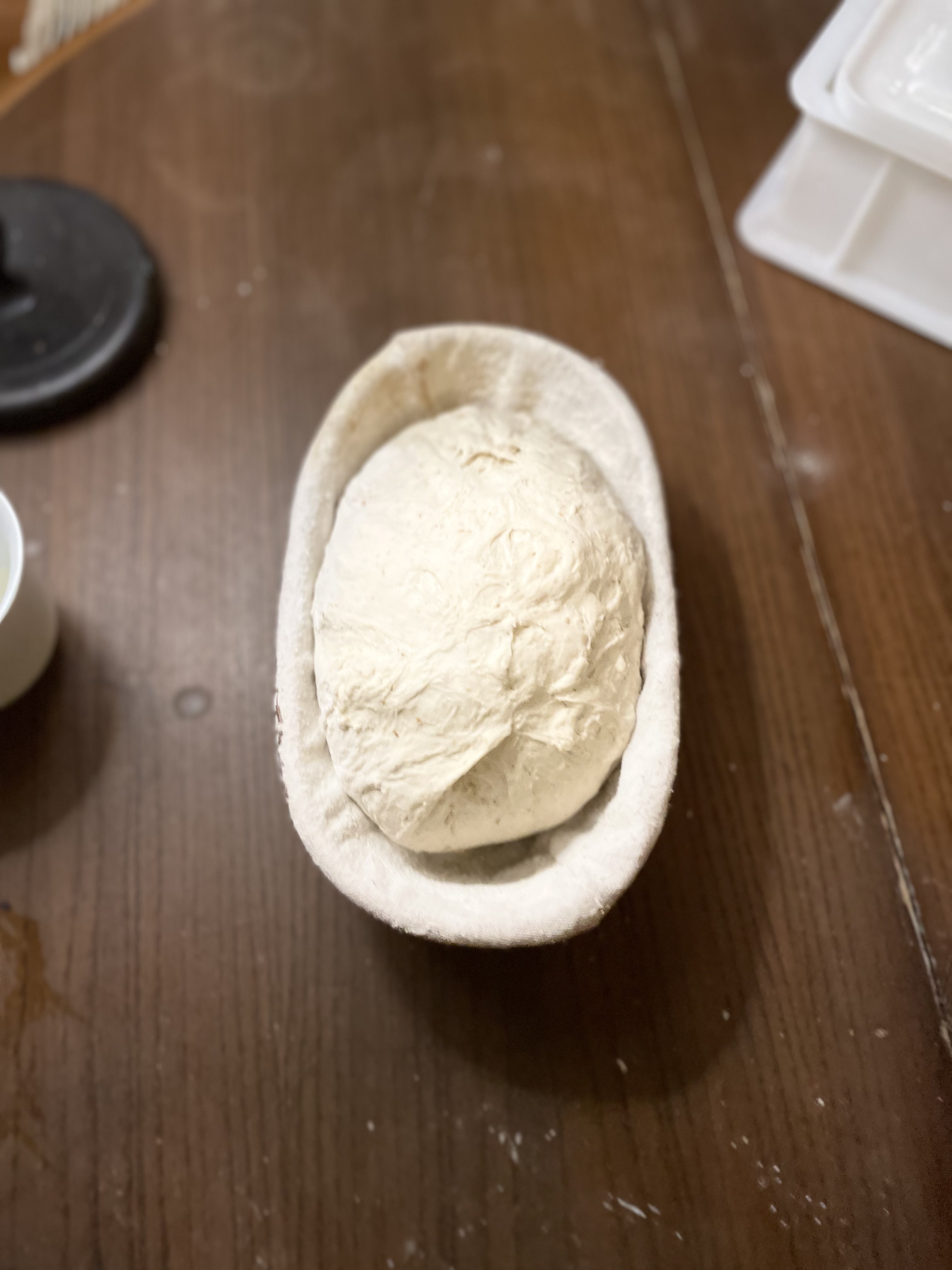
Don’t push past 30 hours; too much acidity weakens structure and skews flavor.
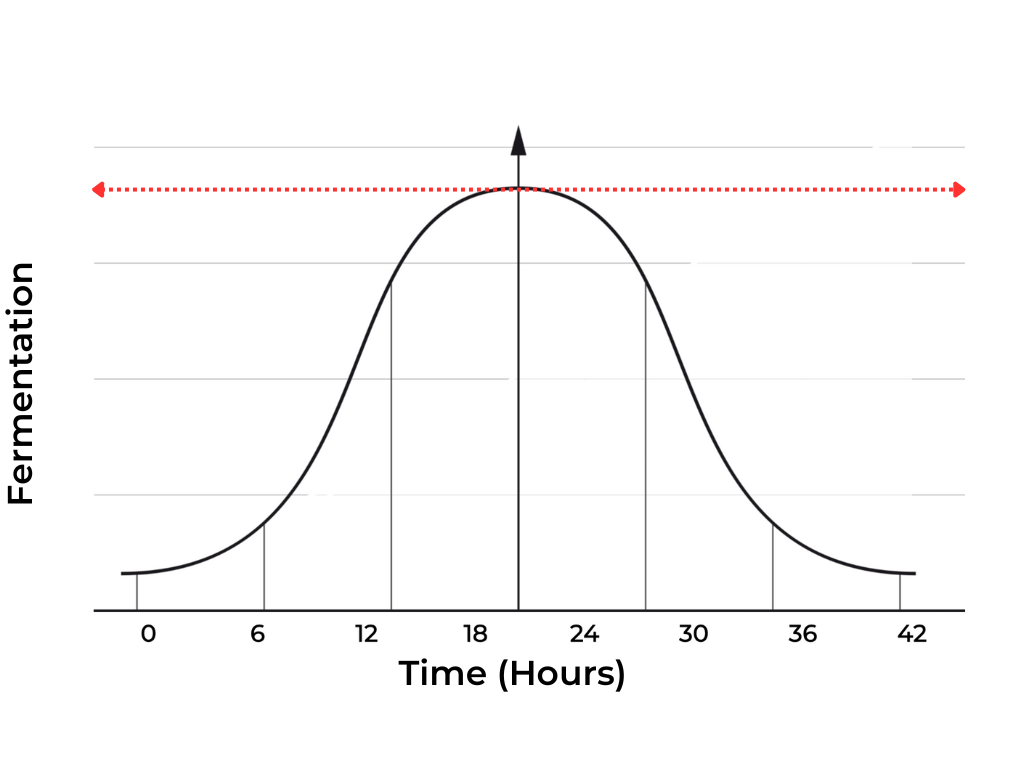
Fermentation peaks, then declines as acids and enzymes break down gluten. Bake too early: dense, erratic holes. Too late: collapsed, gummy crumb.
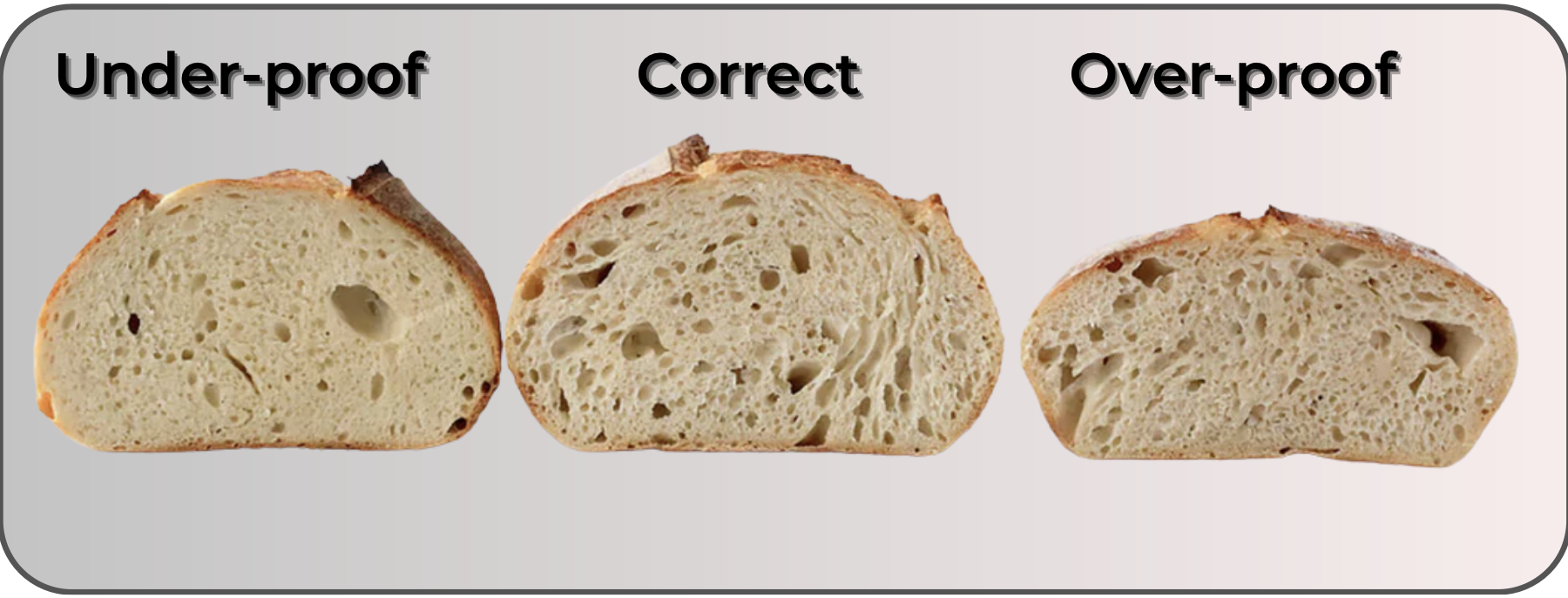
Day Three: The Decisive Finale
Your dough has flavor and strength. Time to bake.
Creating Your Baking Environment
Skip single-purpose kit. Use the open-bake method: Dutch oven results, home-oven setup.
Set it up:
- Baking steel on the middle rack
- Steam pan on the bottom rack
- Inverted tray on the top rack to trap steam
- Heat to 250°C/480°F
- Preheat 40 minutes for full saturation
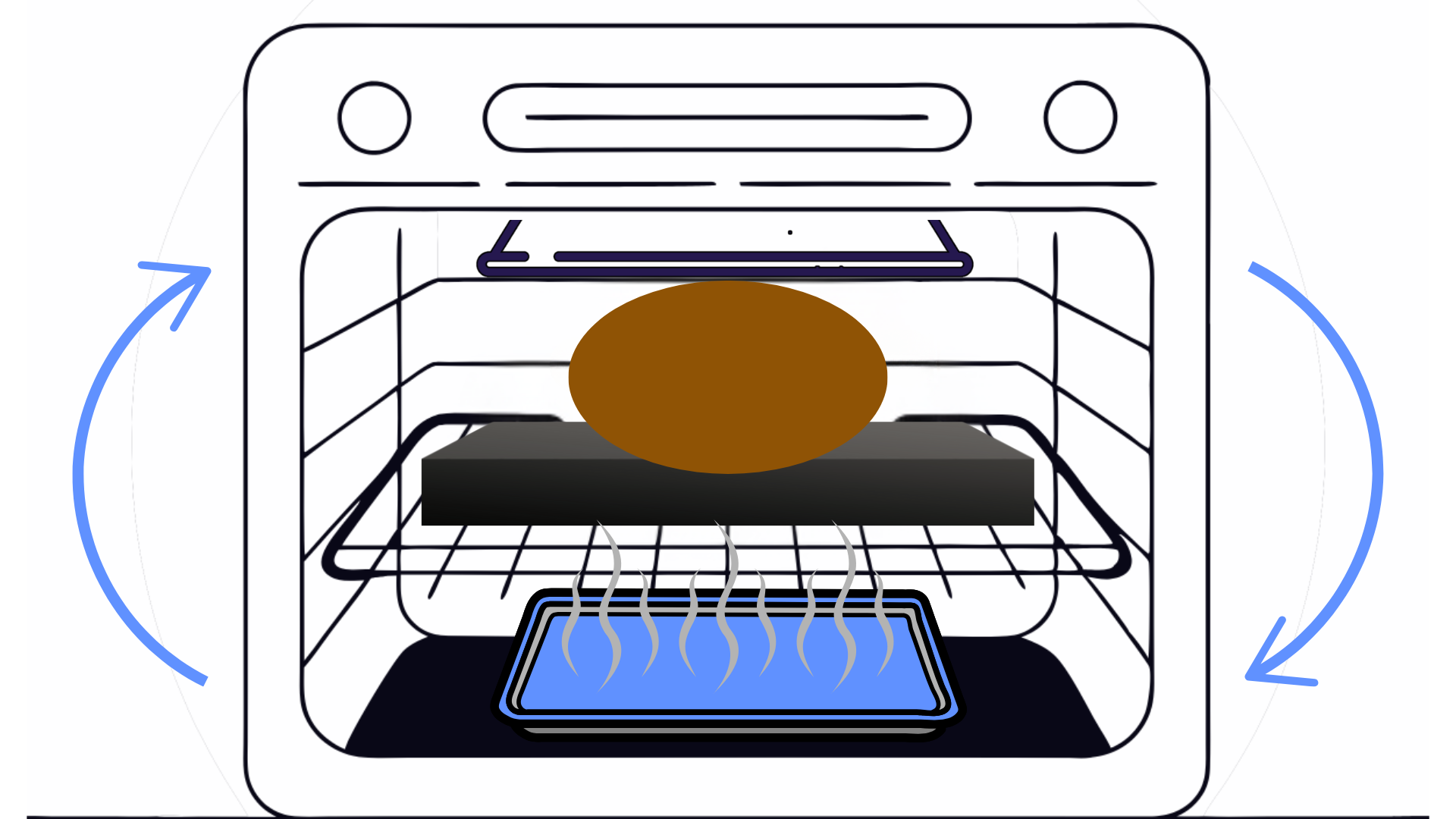
Before baking, gather:
- Blade or lame
- Peel or board
- Heat-resistant gloves
- Spray bottle of water
- Kettle with boiling water
Scoring
Scoring controls expansion and makes the ear.

For clean scores:
- Hold the blade at ~45°
- Make one confident ¼-inch cut
- Score right before loading
- Keep decorative cuts shallow (⅛-inch)
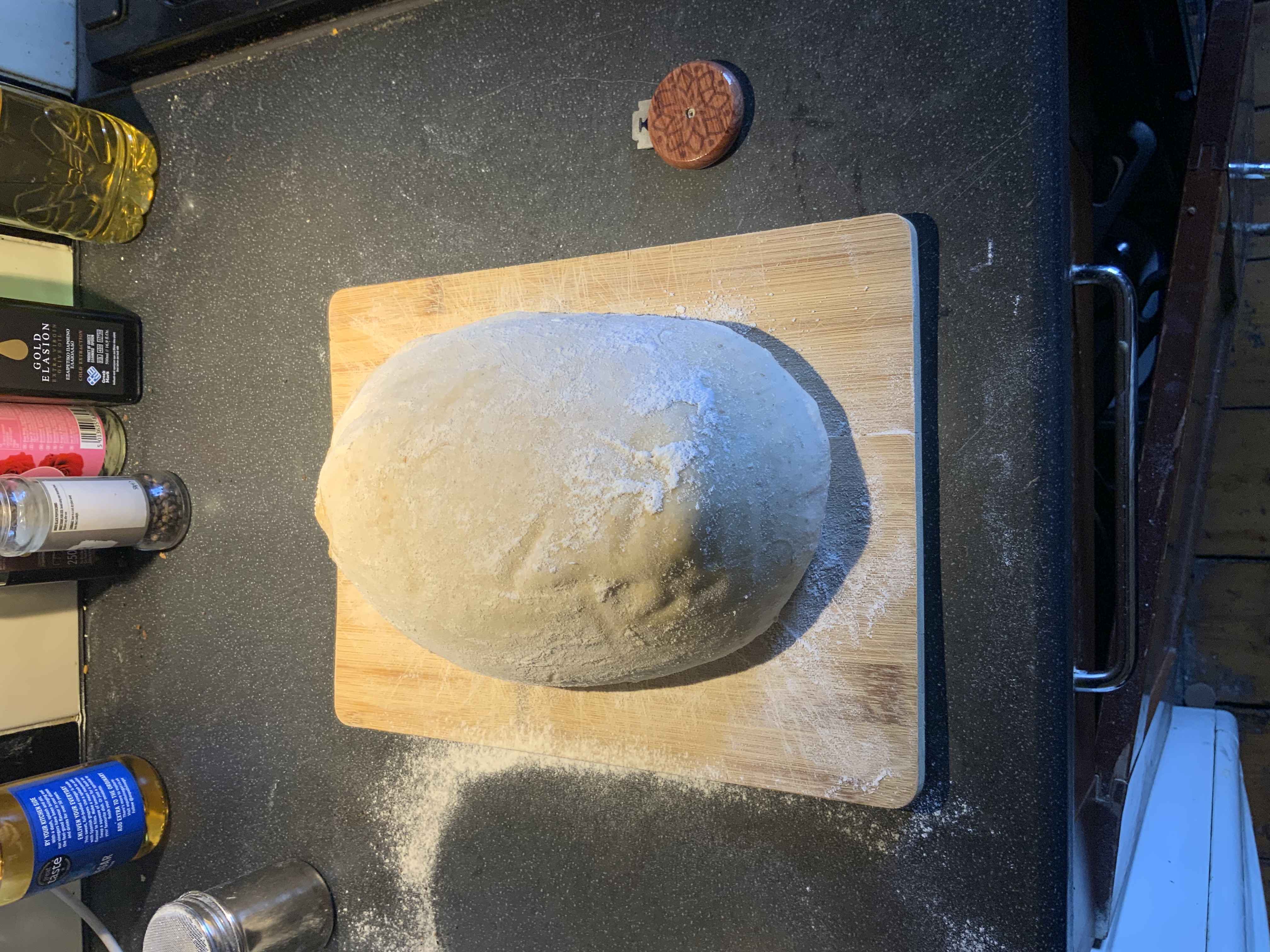
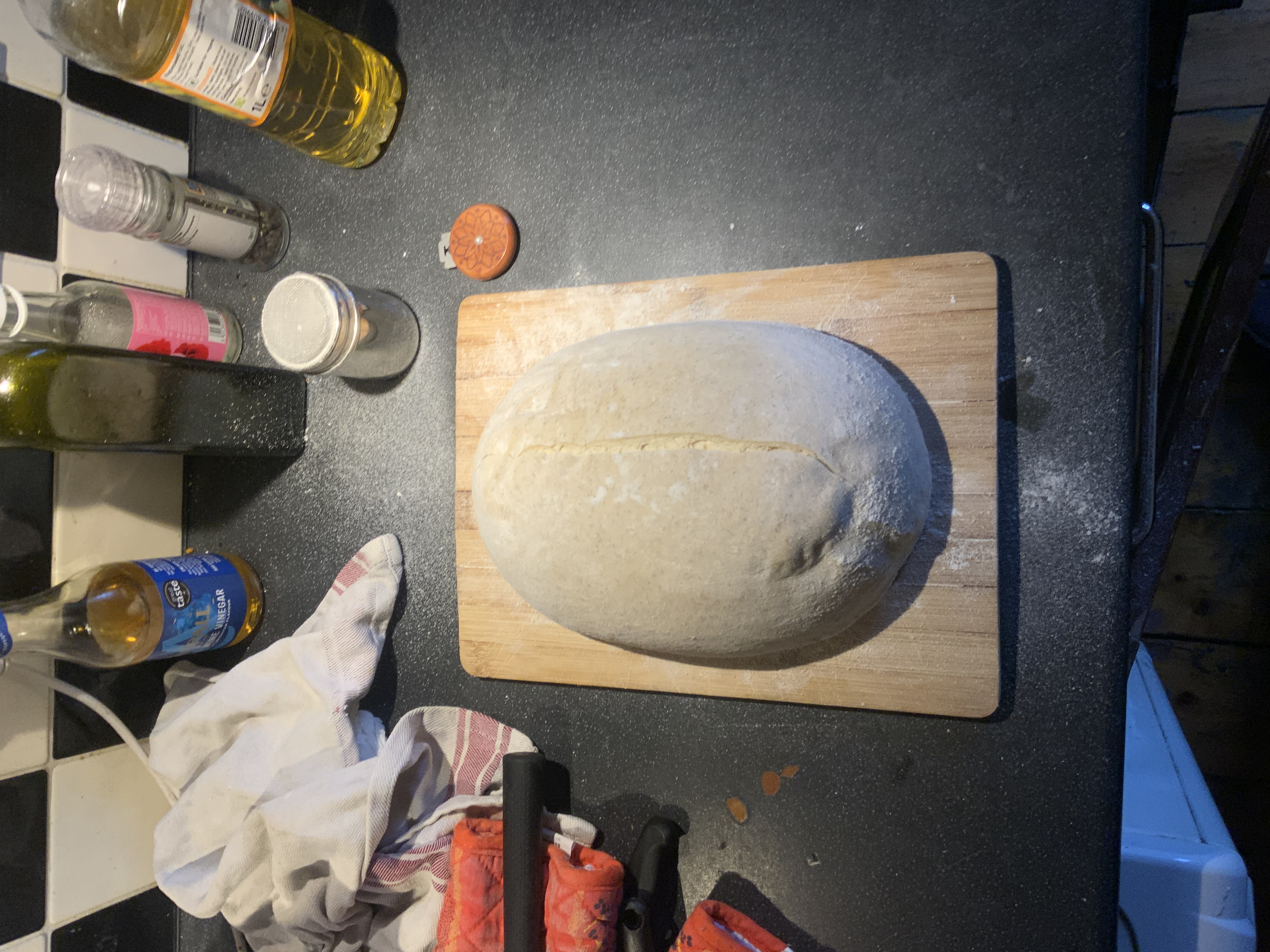
The Bake
Move quickly:
- Load the loaf onto the hot steel
- Pour boiling water into the steam pan
- Mist the oven
- Close the door
Two phases:
- Steam (30 minutes)
- Steam delays crust, maximizes expansion
- Hold 250°C/480°F
- Crust (15–20 minutes)
- Remove steam pan and inverted tray (carefully)
- Drop to 230°C/450°F
- Rotate loaf 180°
- Aim for deep caramelization, not burnt
The Result
You’re looking for:
- Deep mahogany crust
- A pronounced ear
- Hollow sound when tapped underneath
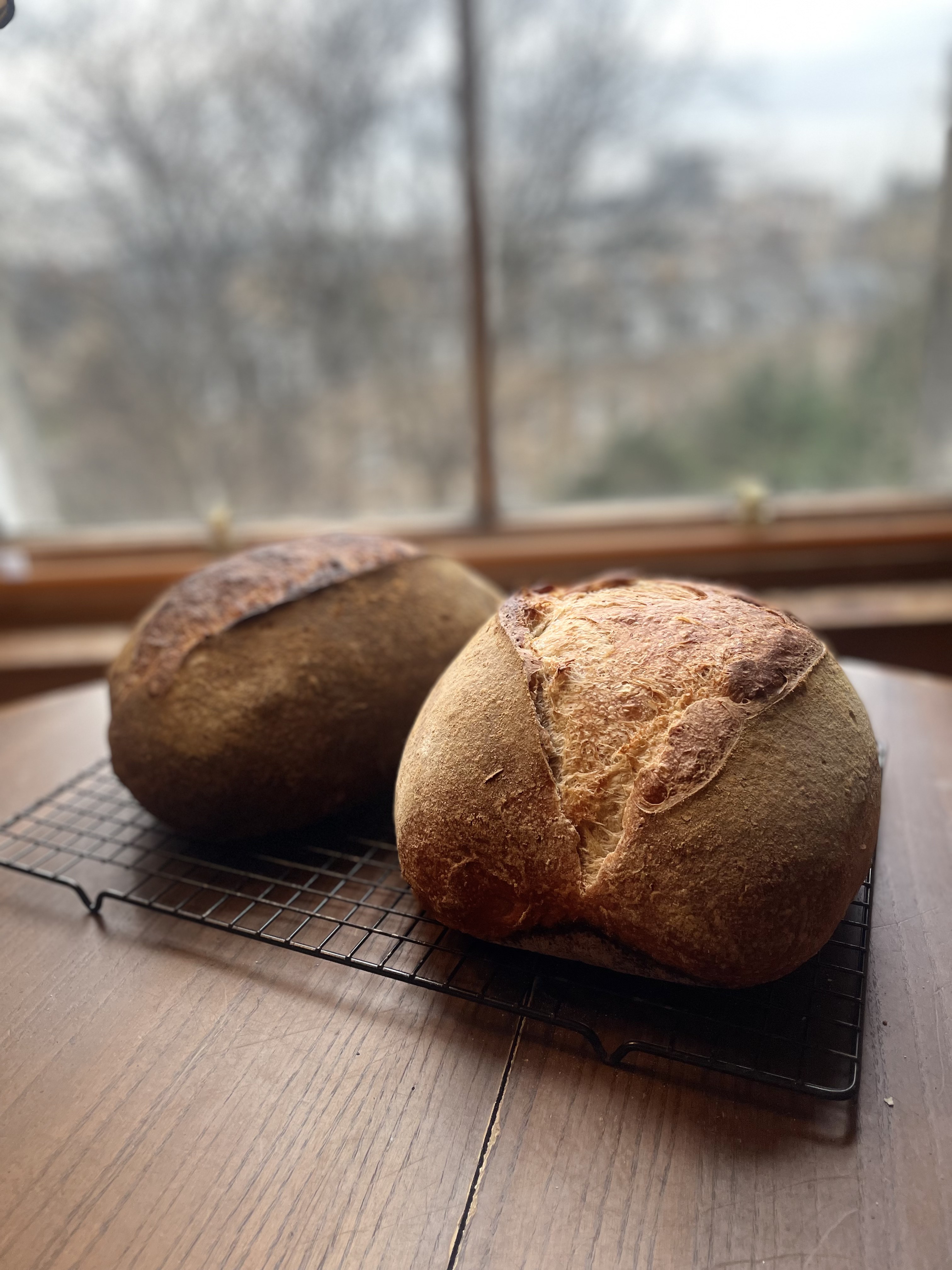
Don’t slice warm. Let the crumb set and moisture equalize. The crust and flavor improve as it cools.
The Journey Continues
This method will evolve, but the principles stay: patient fermentation, gentle handling, attentive baking. As you gain confidence, tweak hydration, flour blends, or add seeds. There’s no single right way—bread is oddly personal.
Like this method? For more prefermented breads give me a follow. Naan’s next.